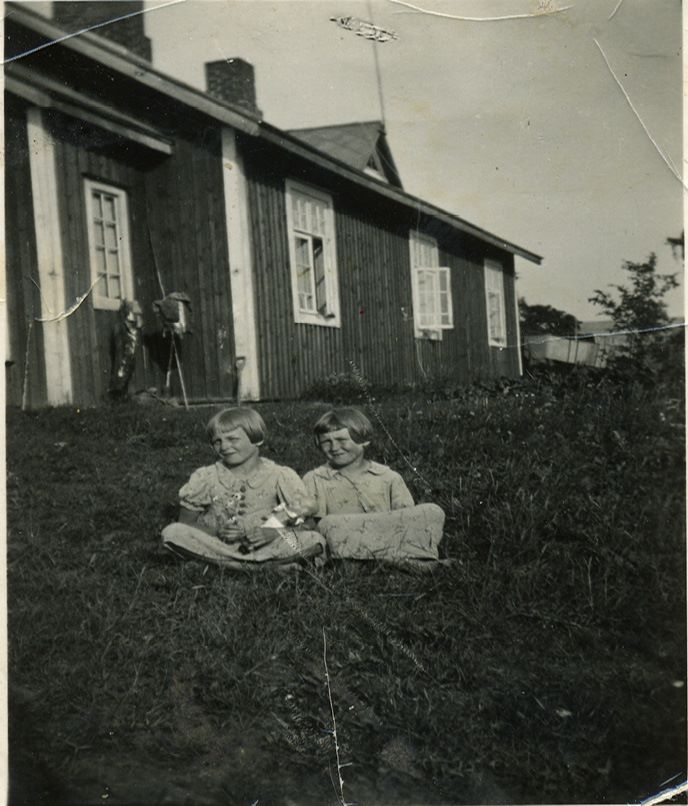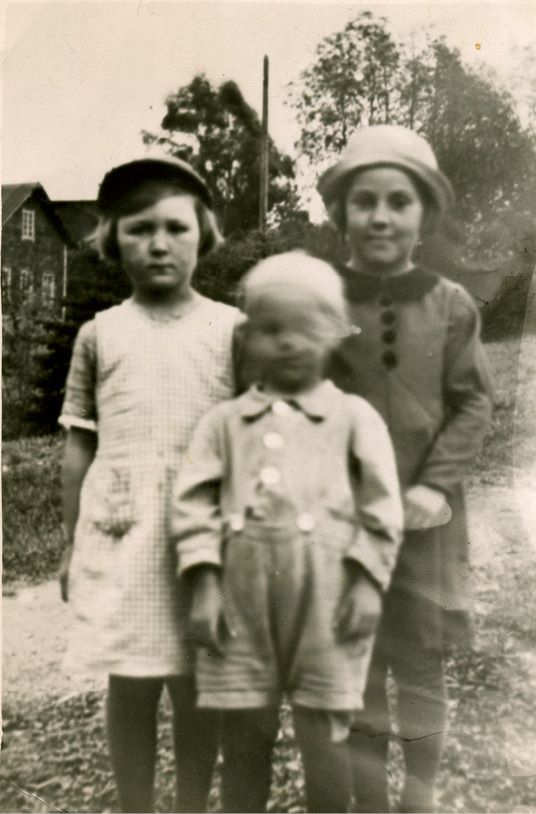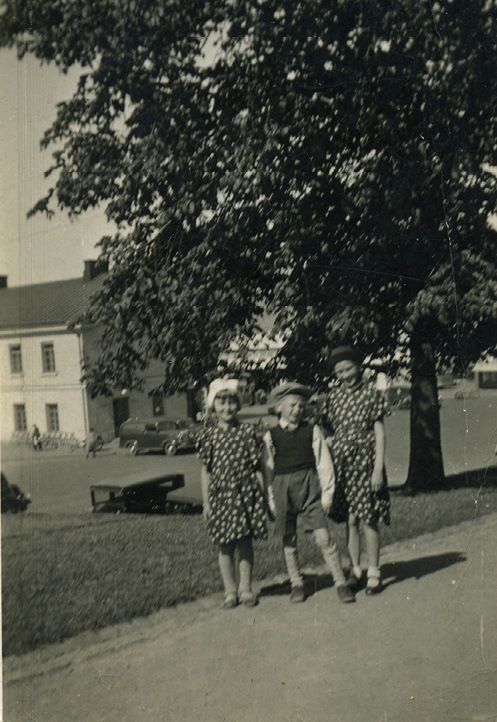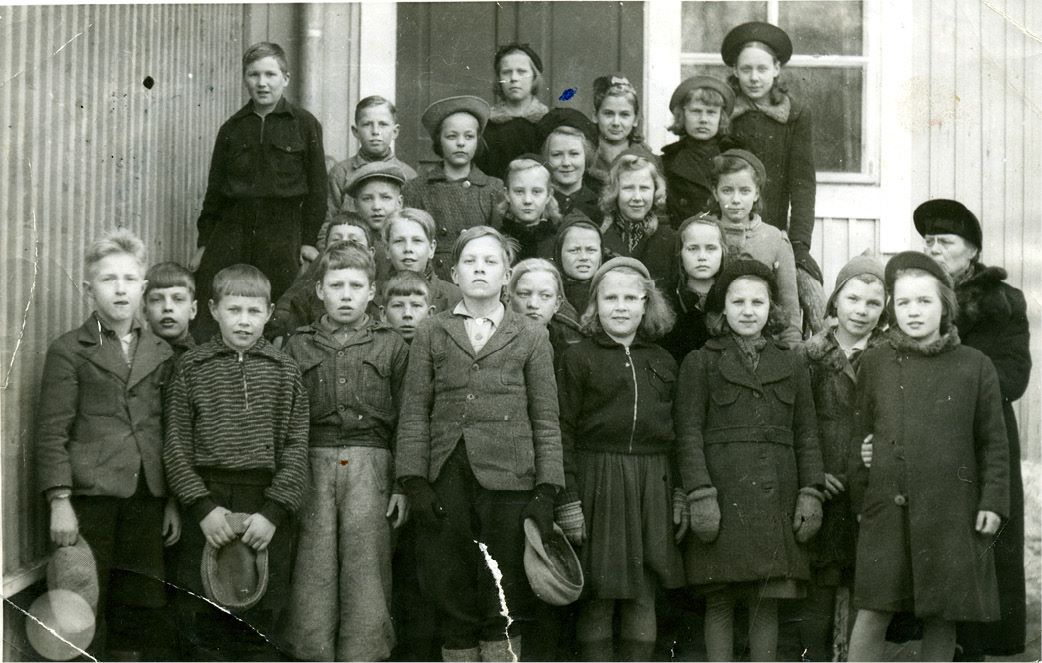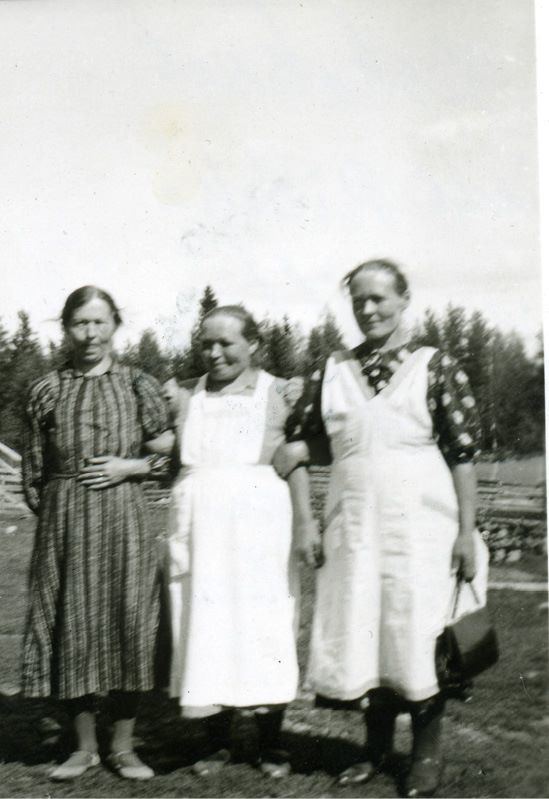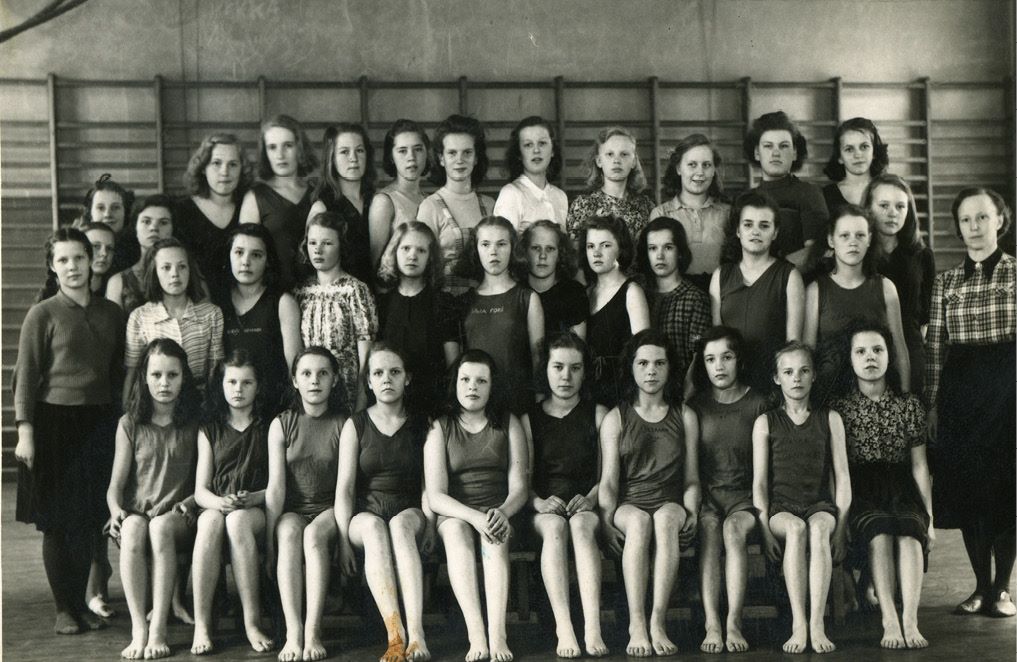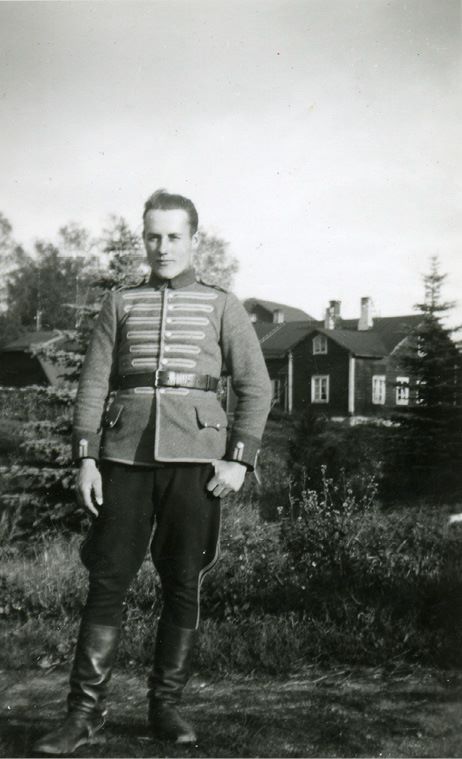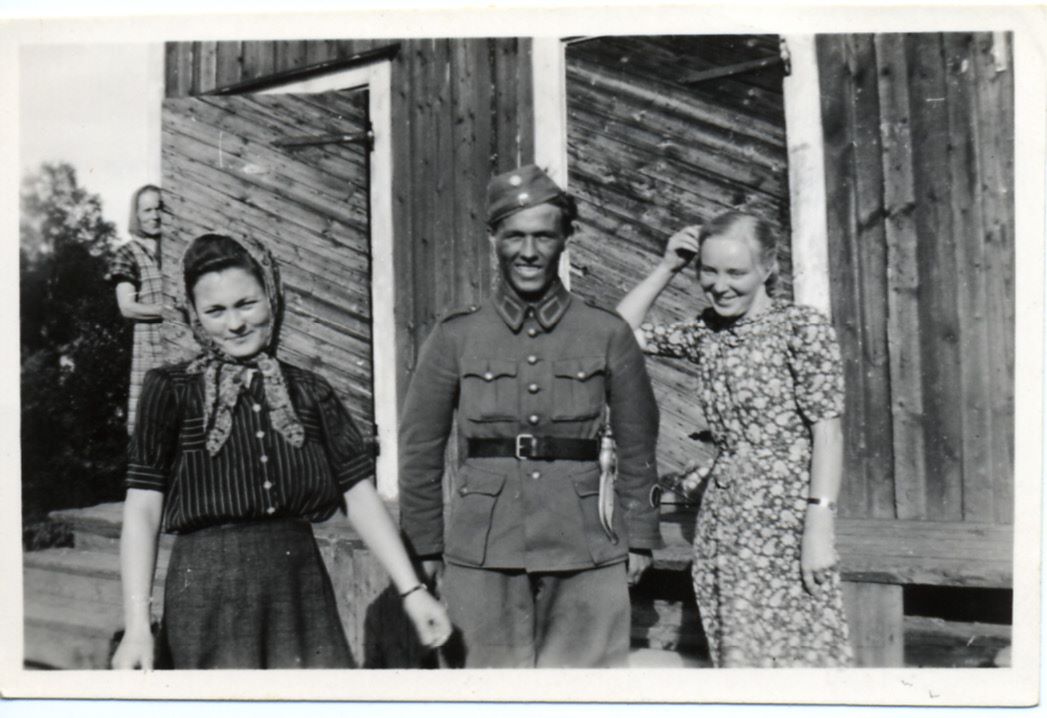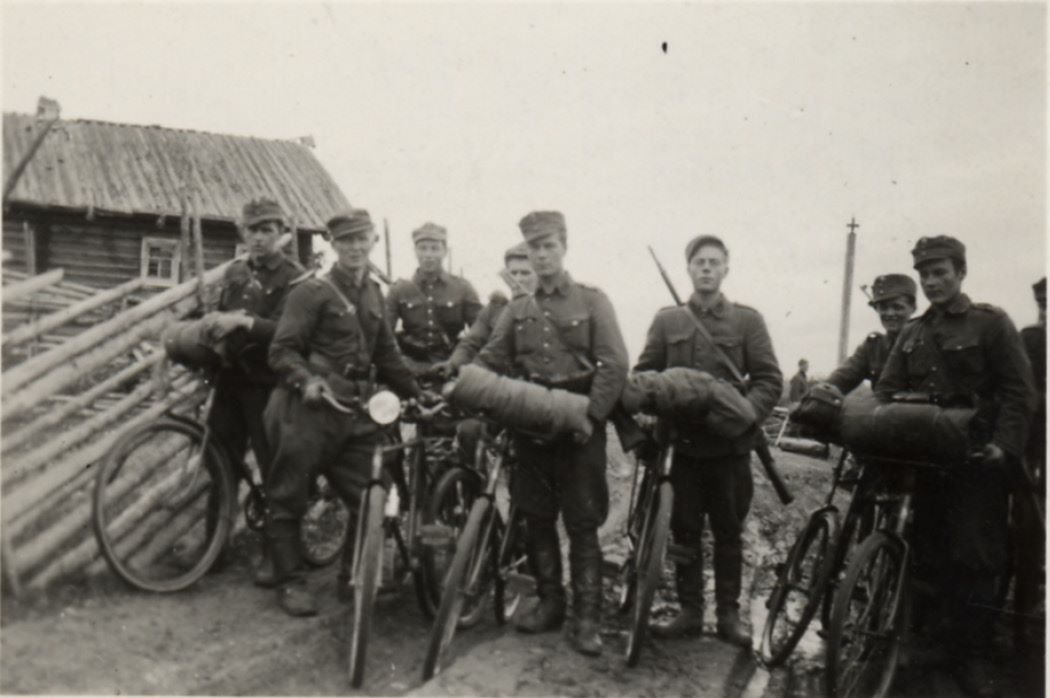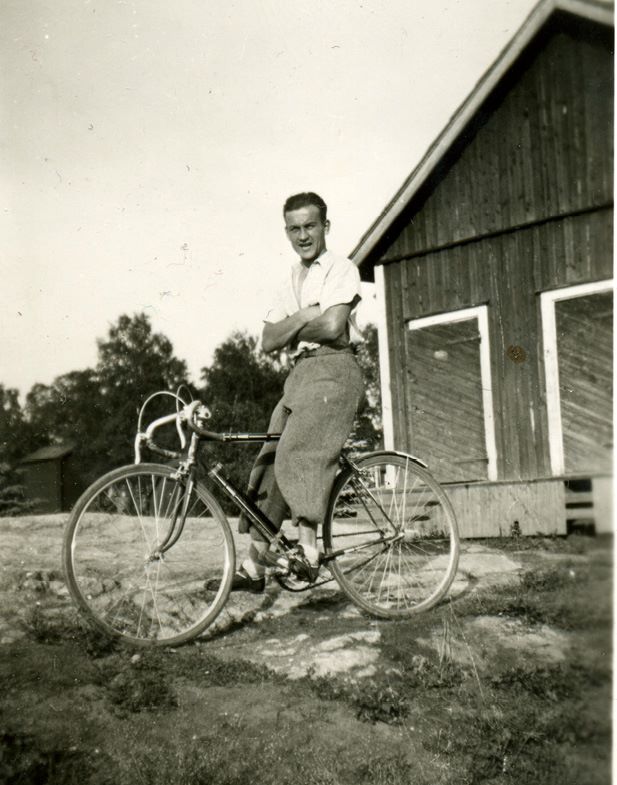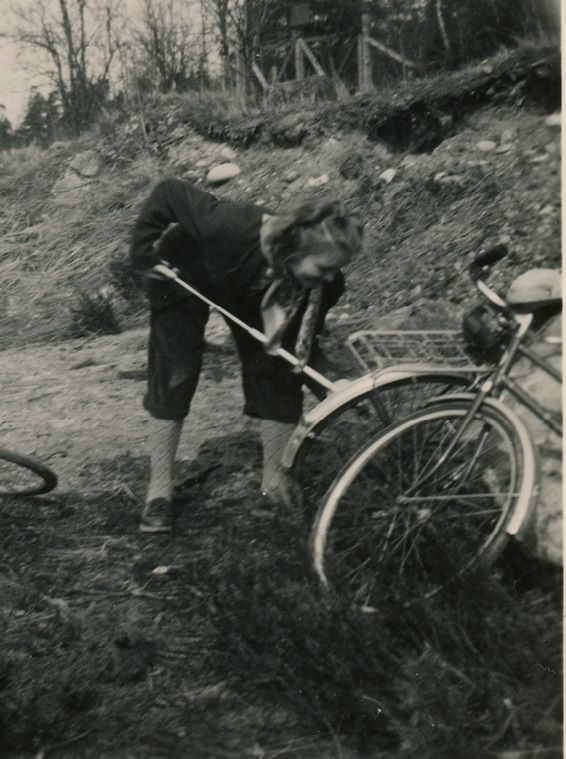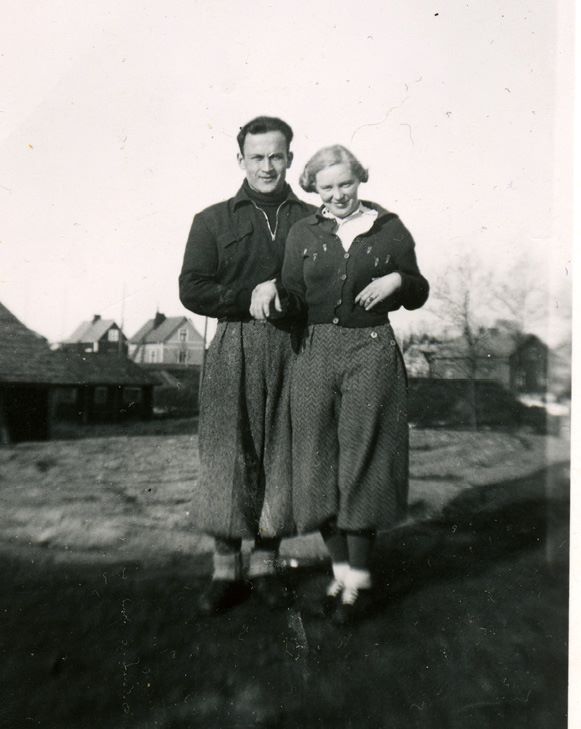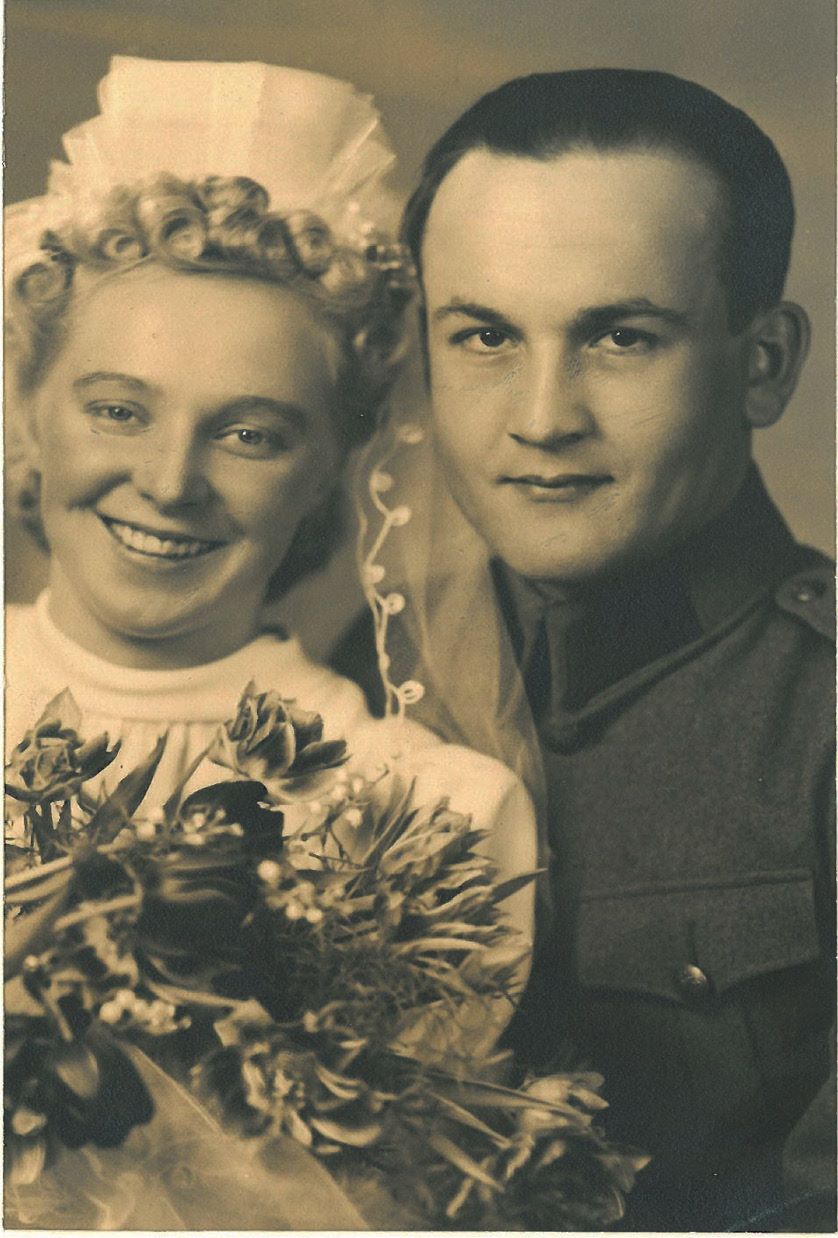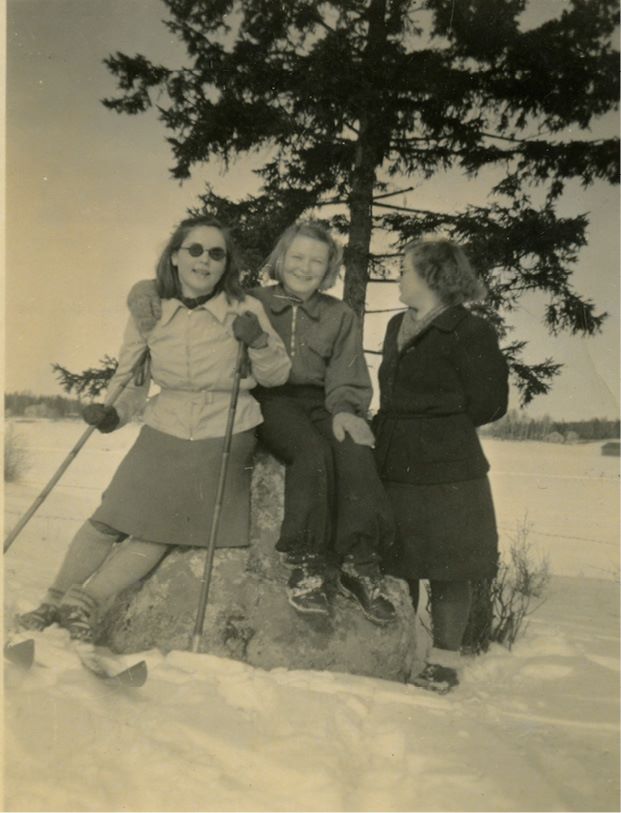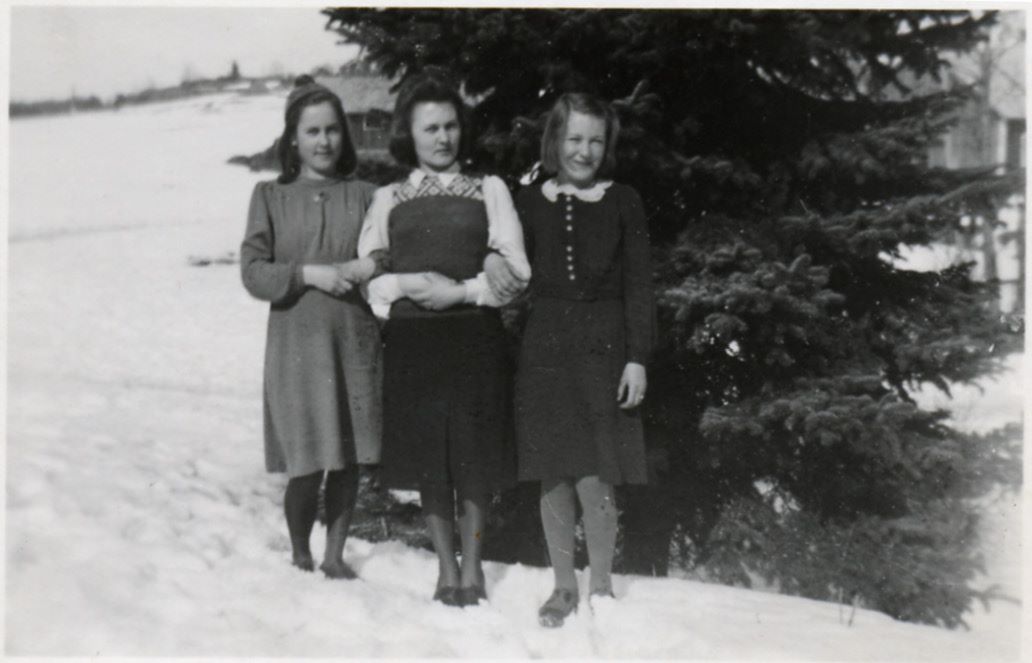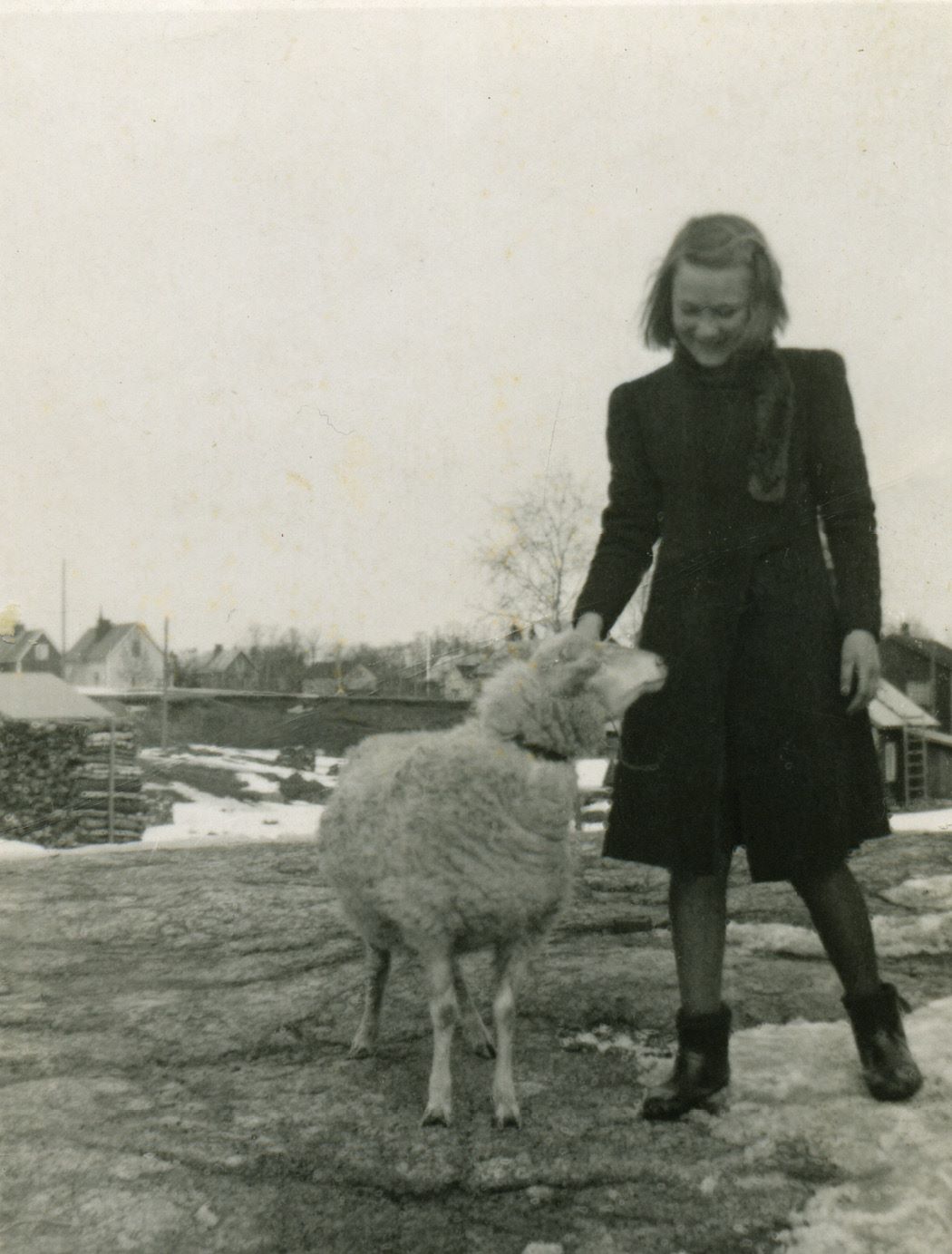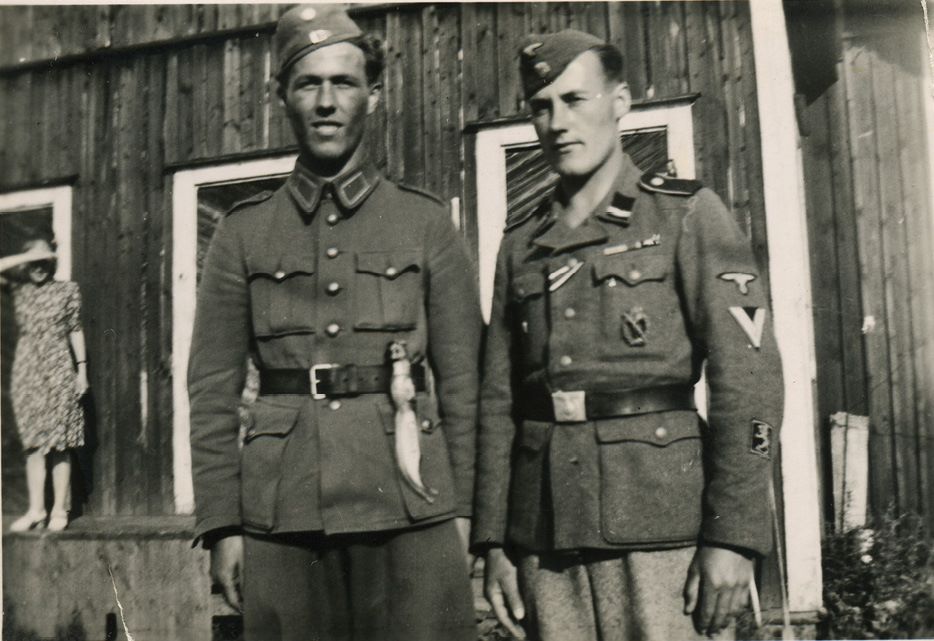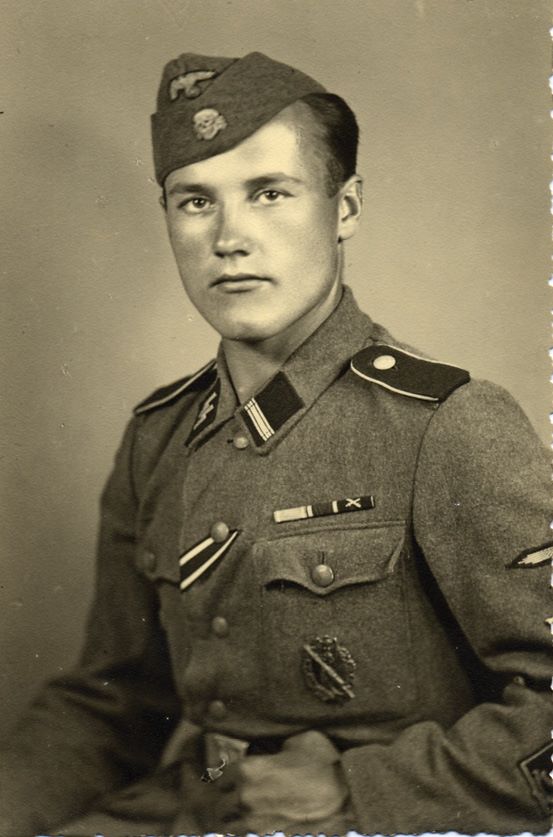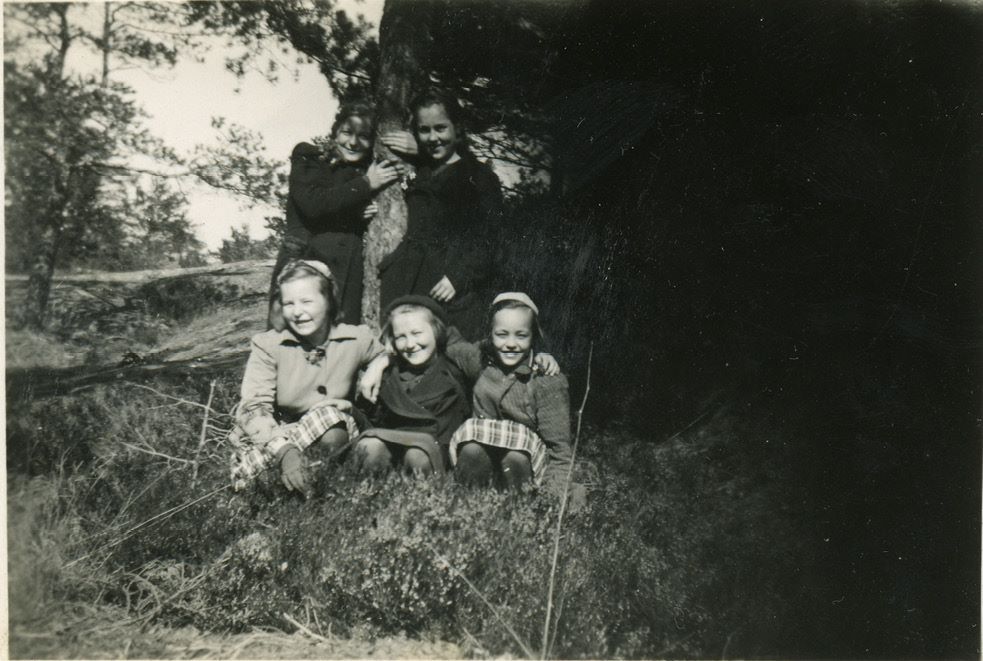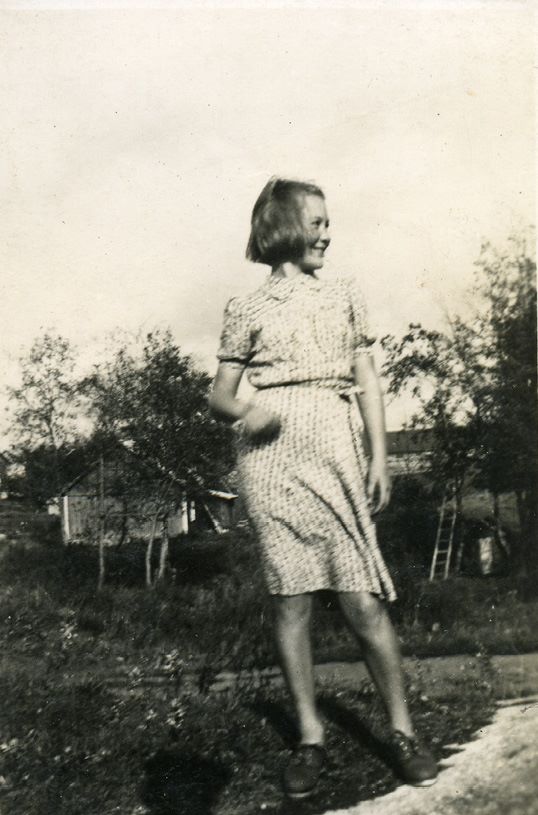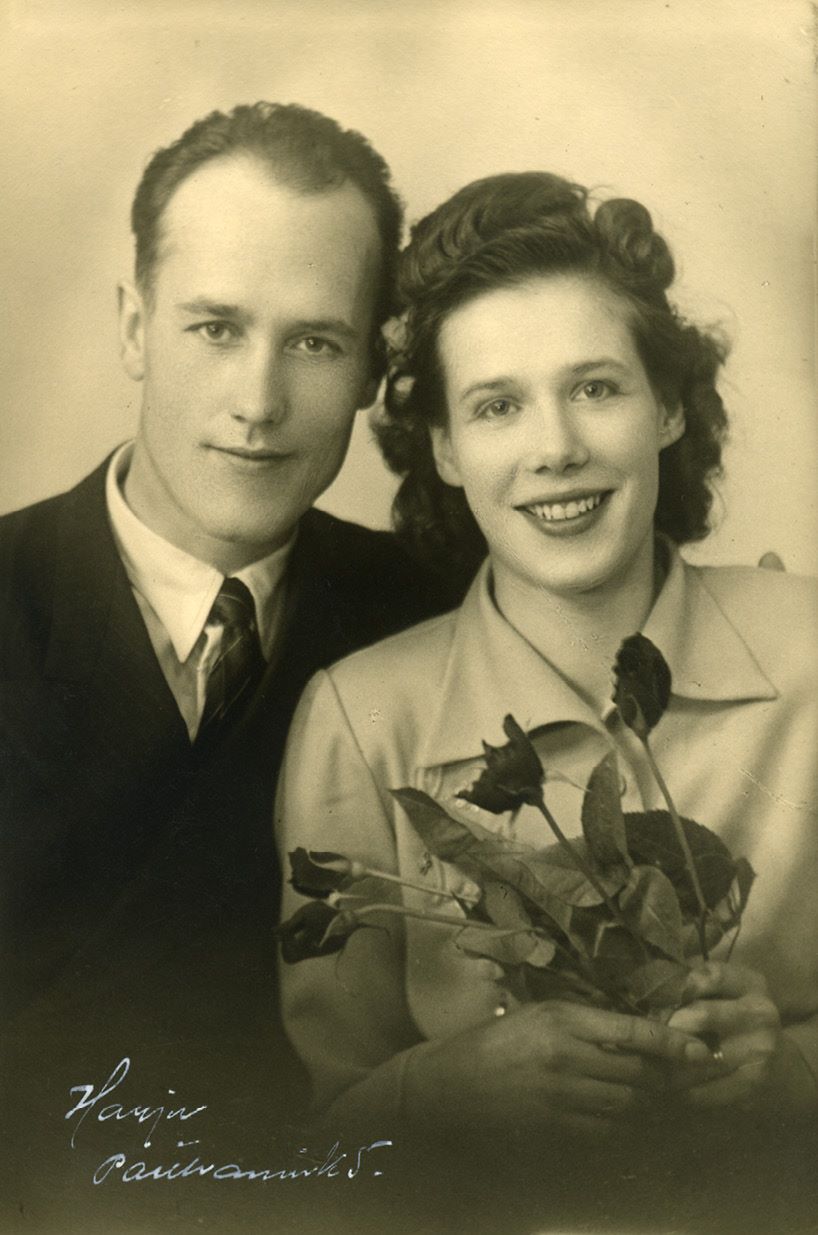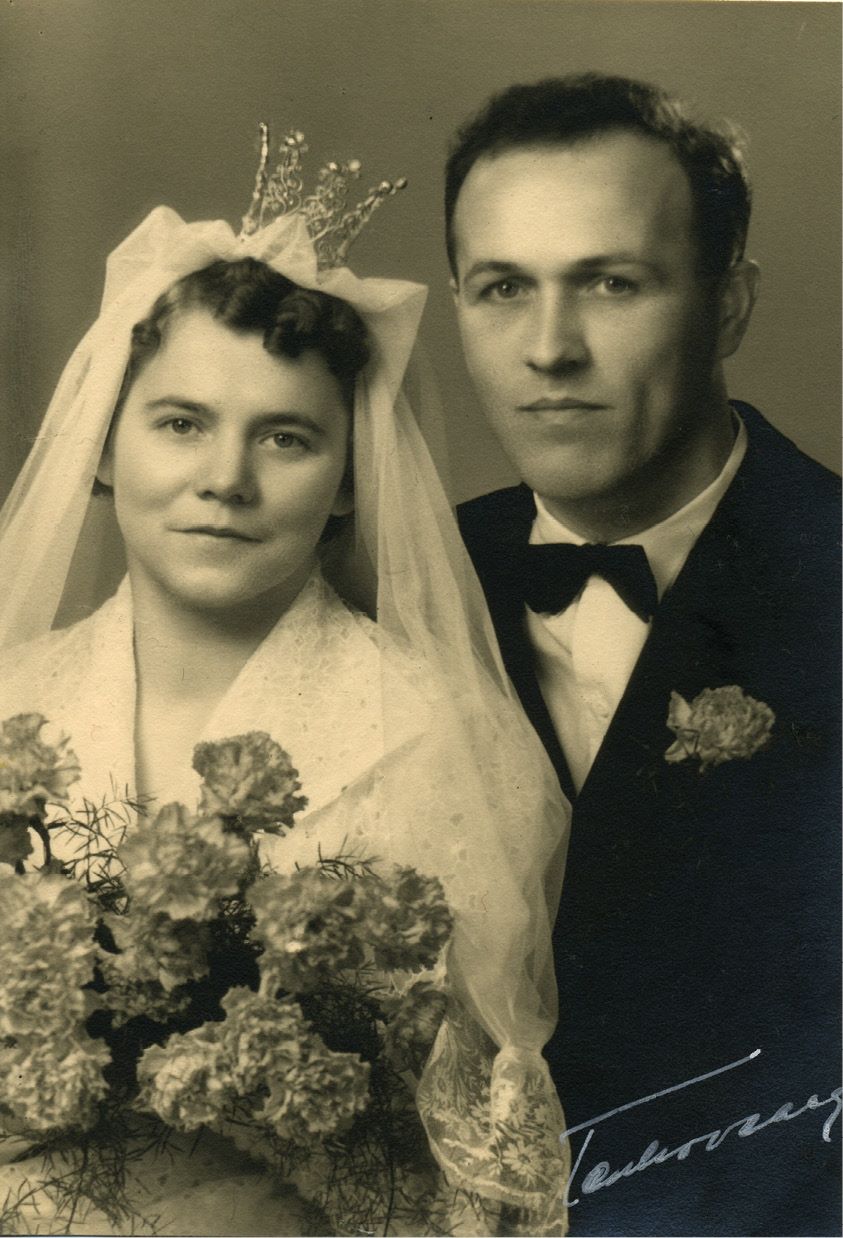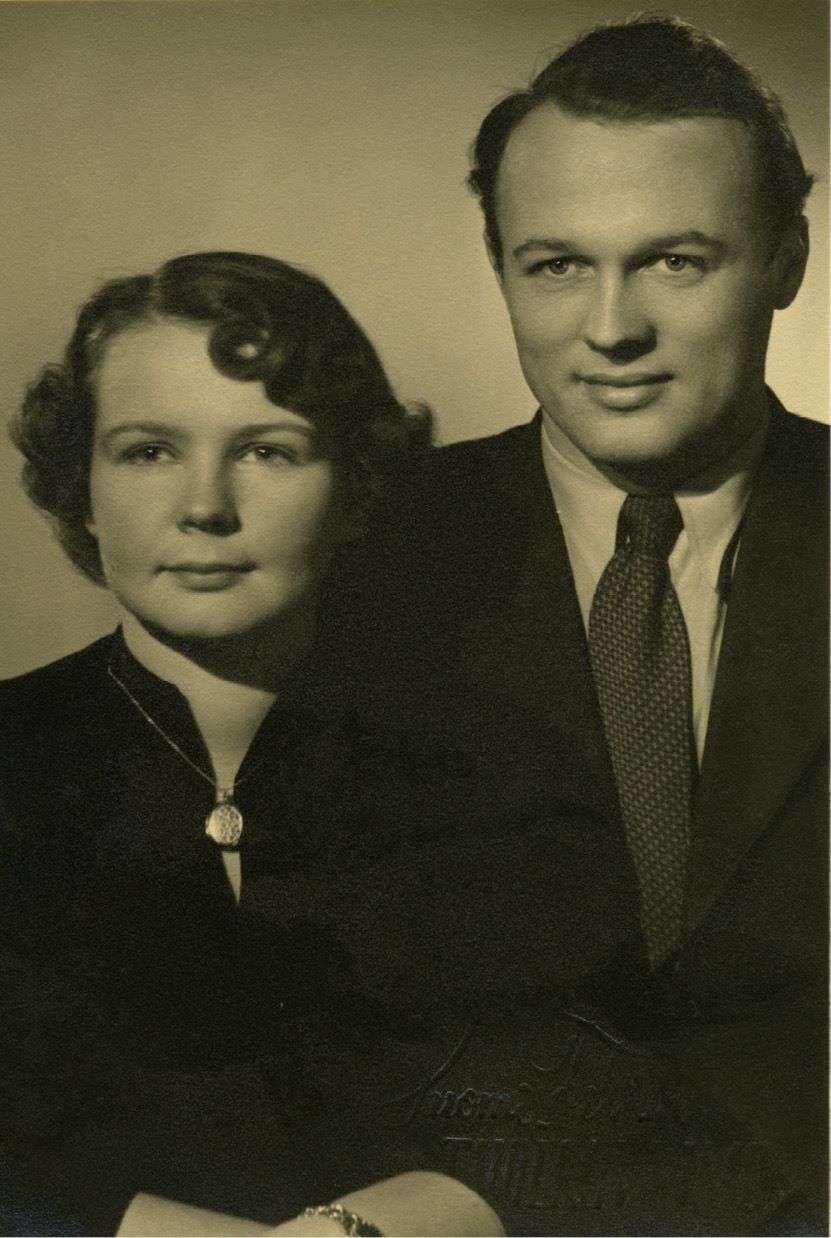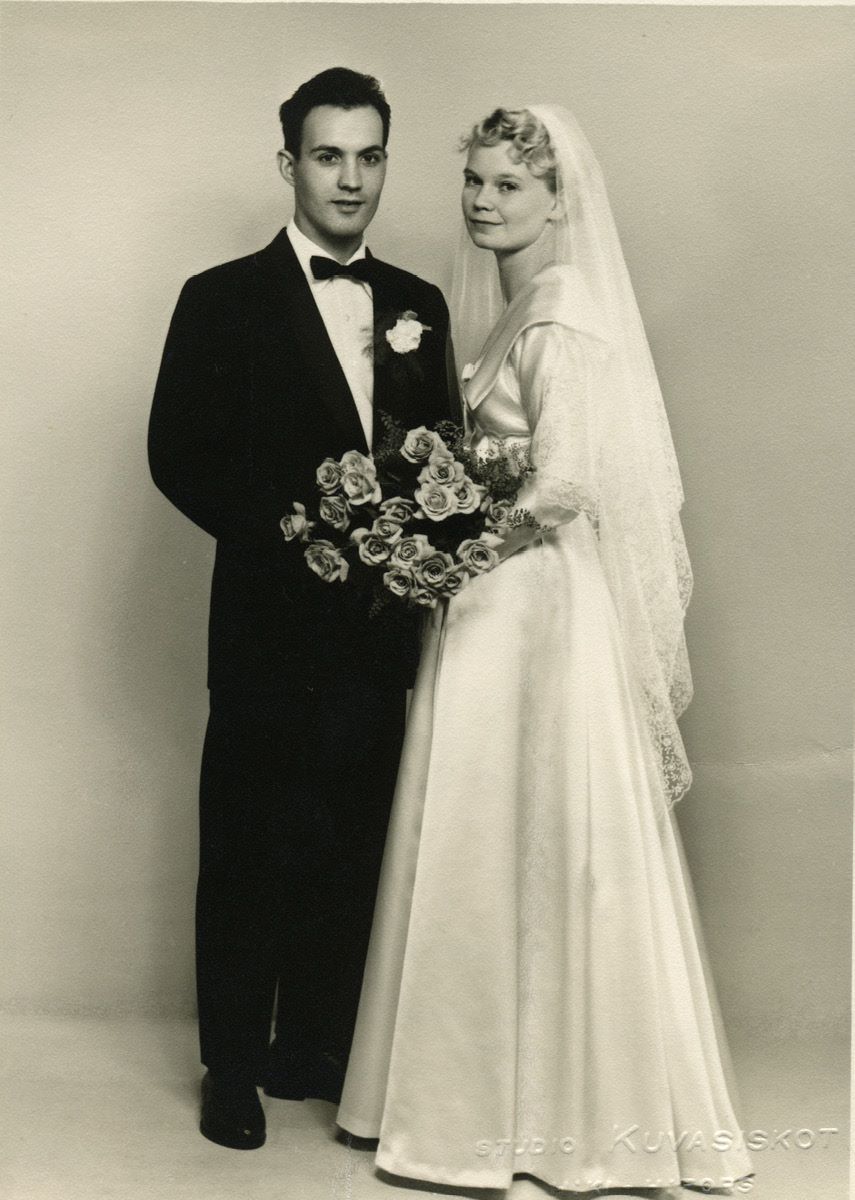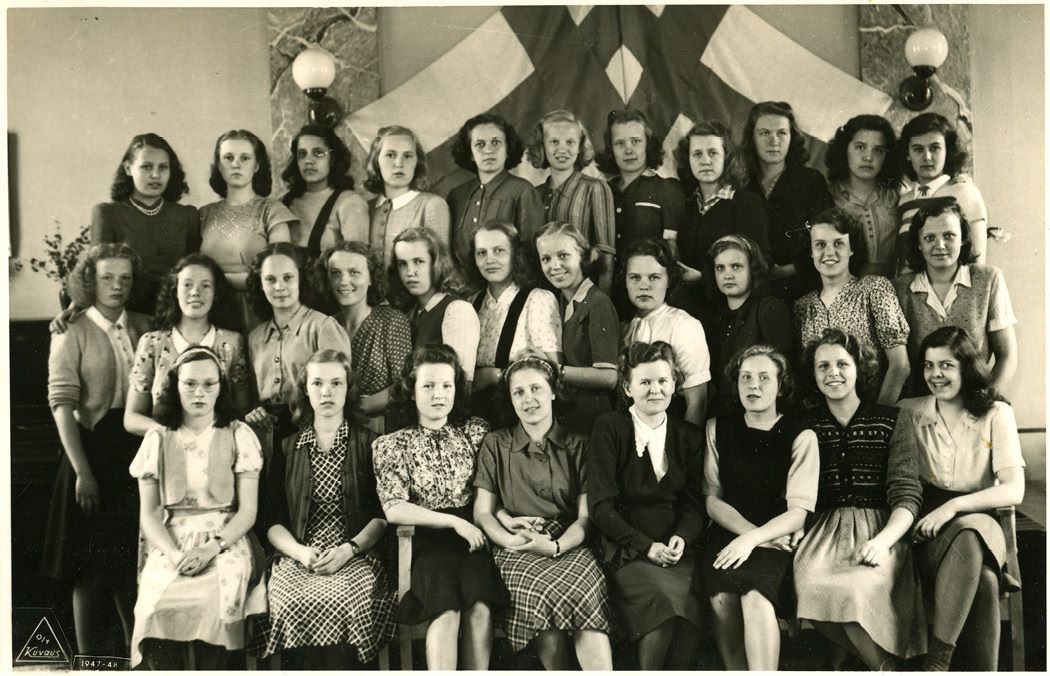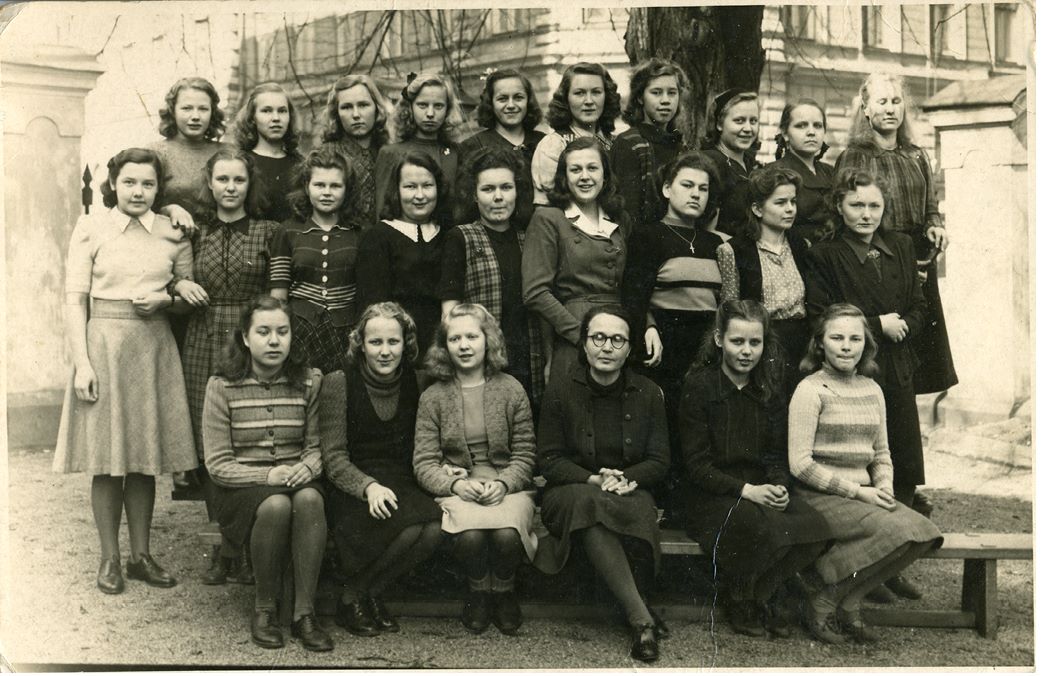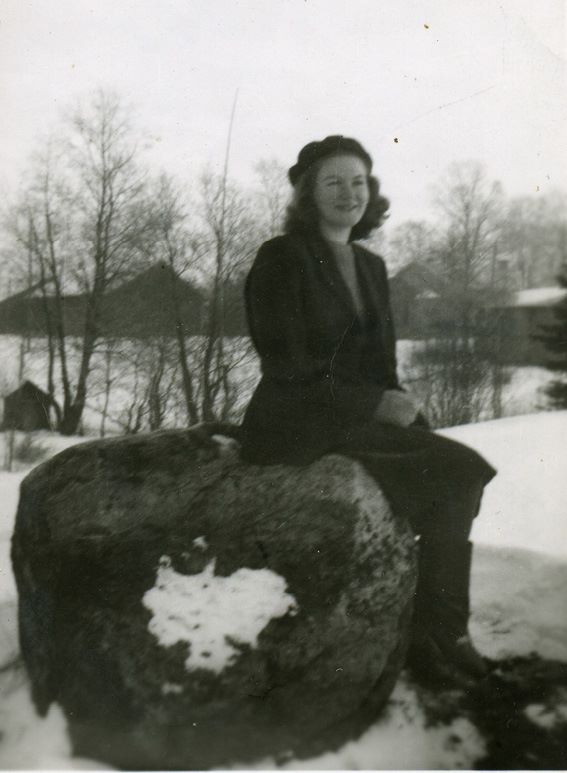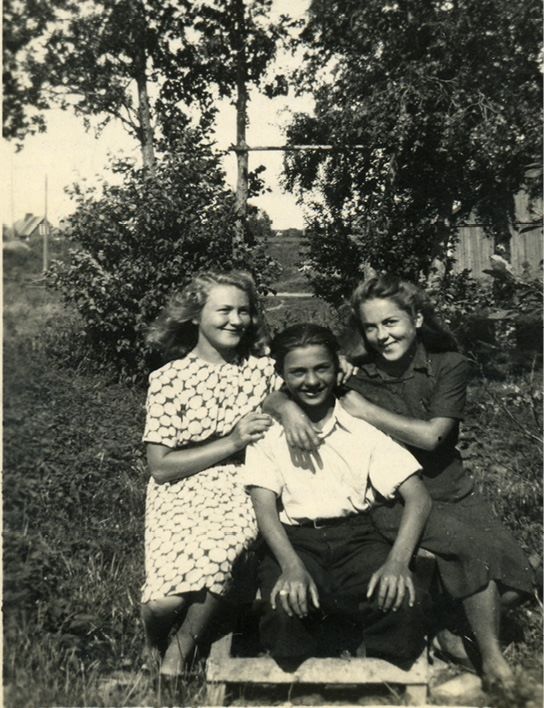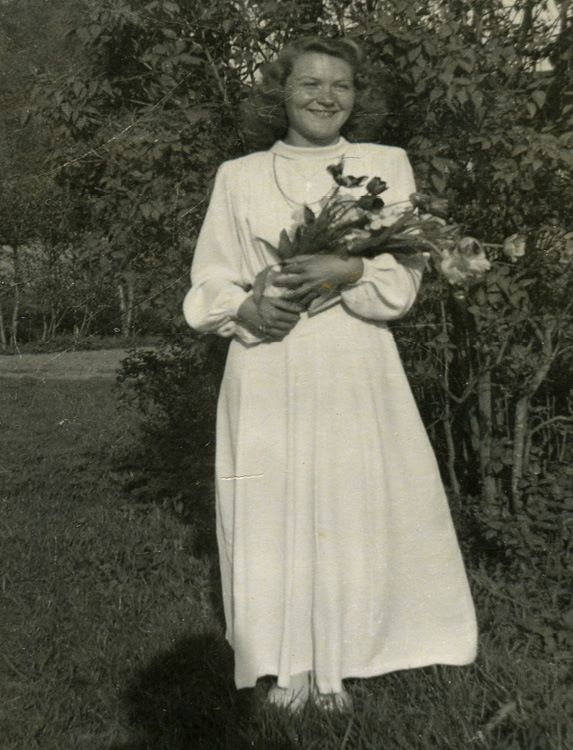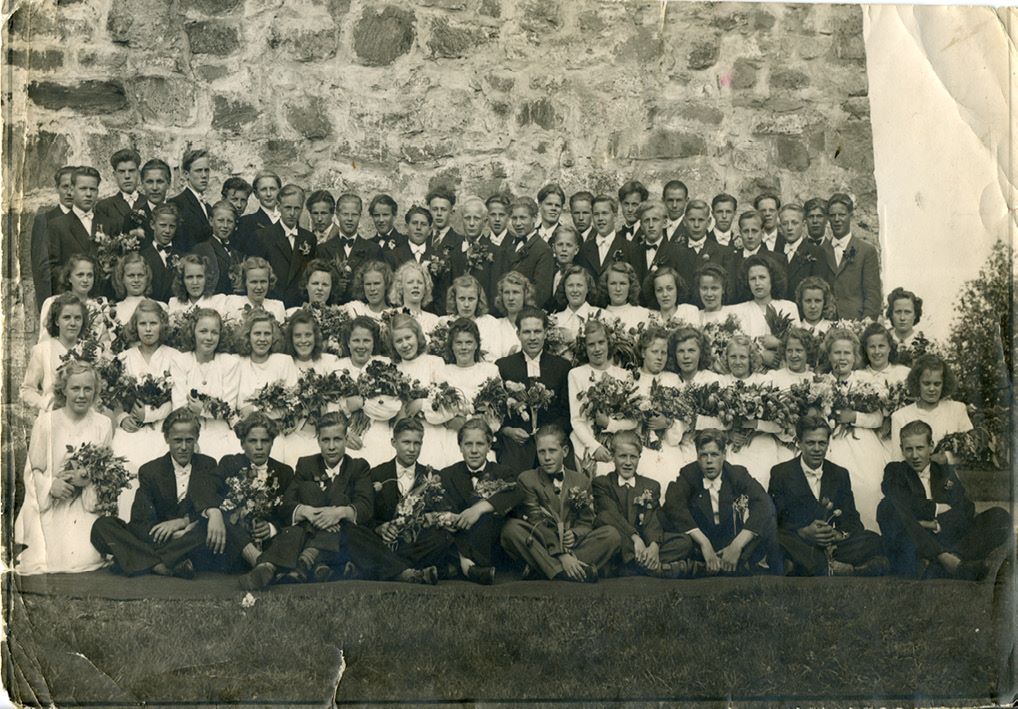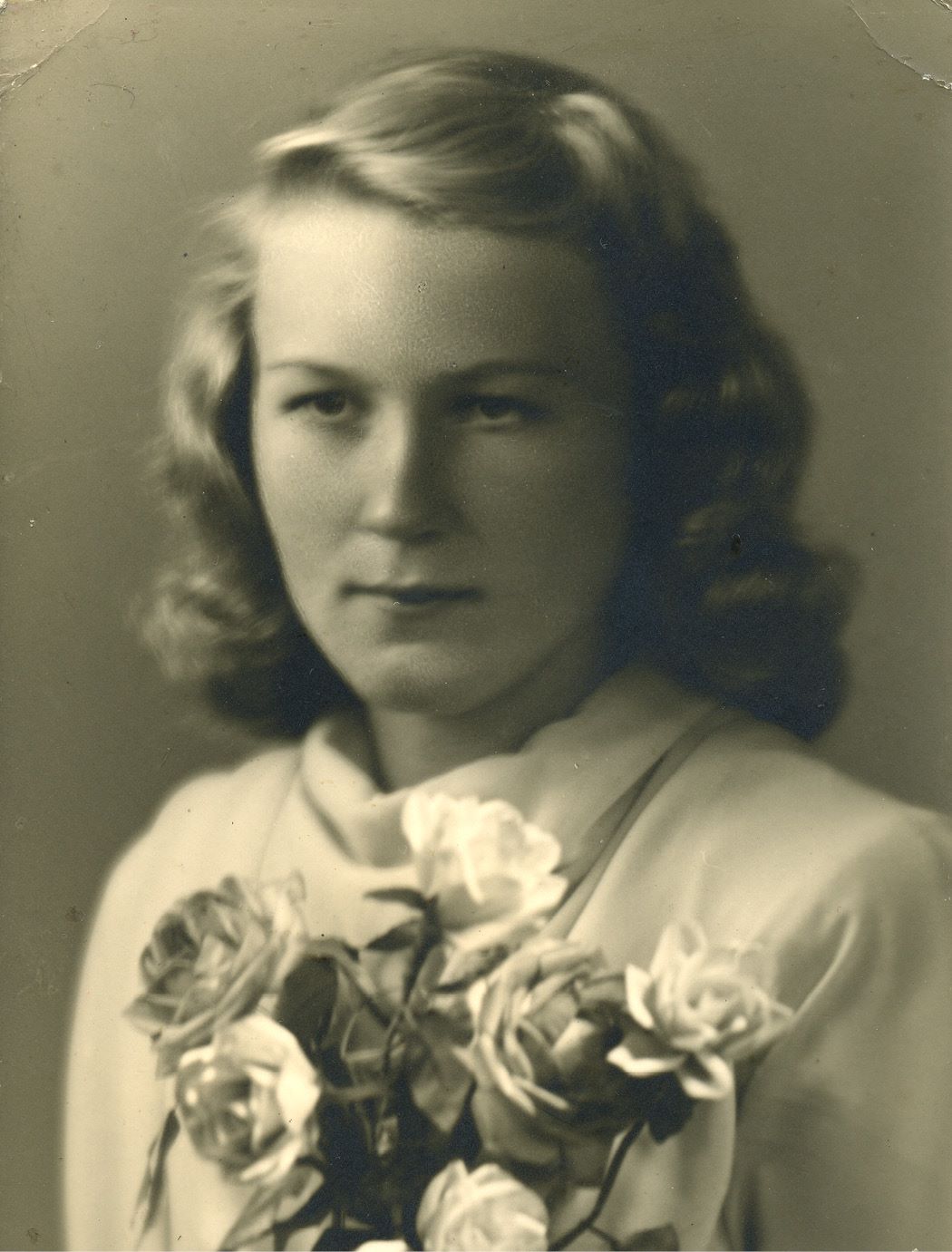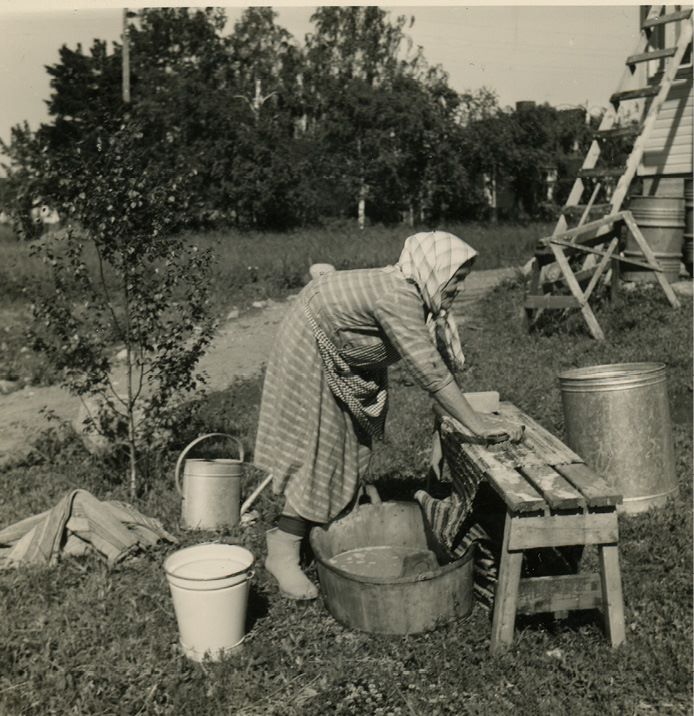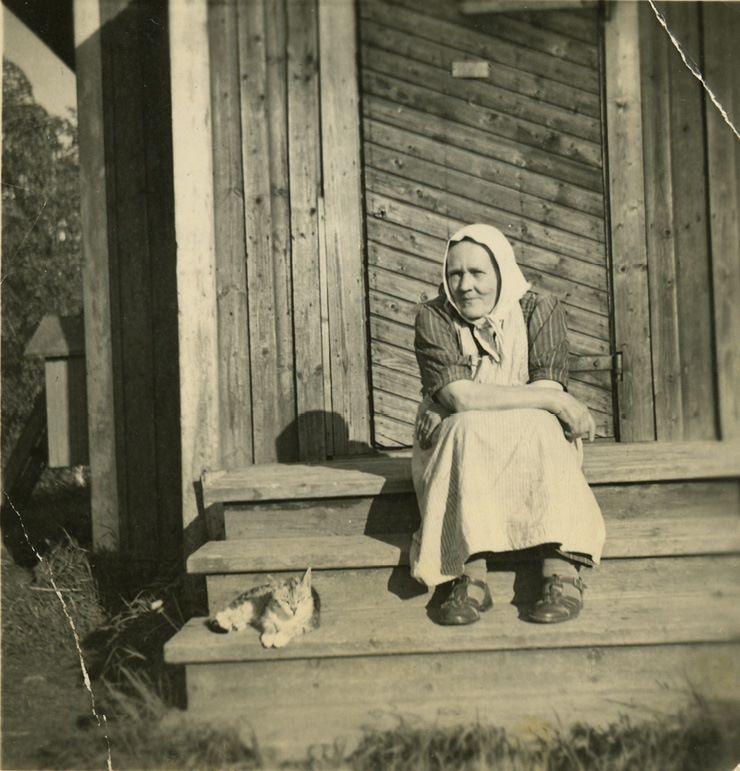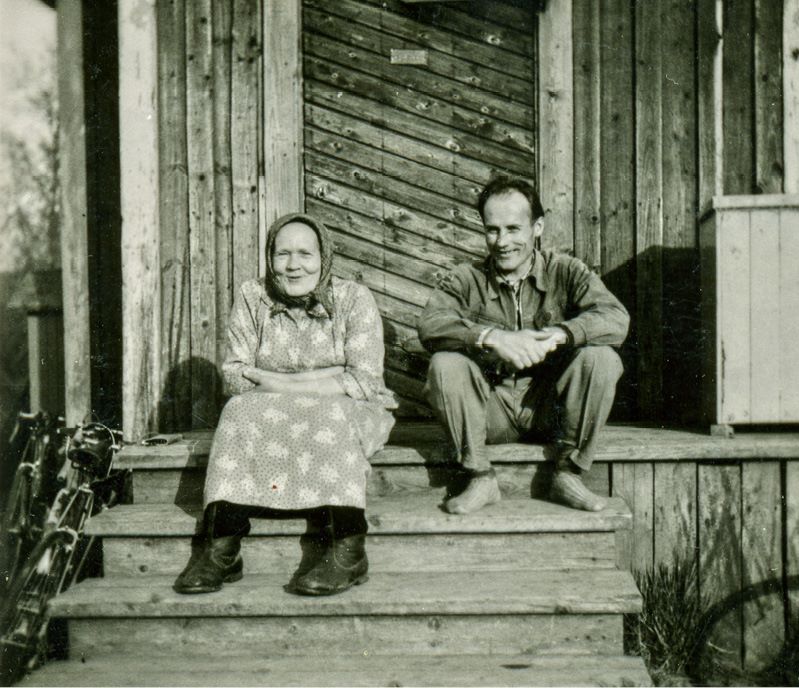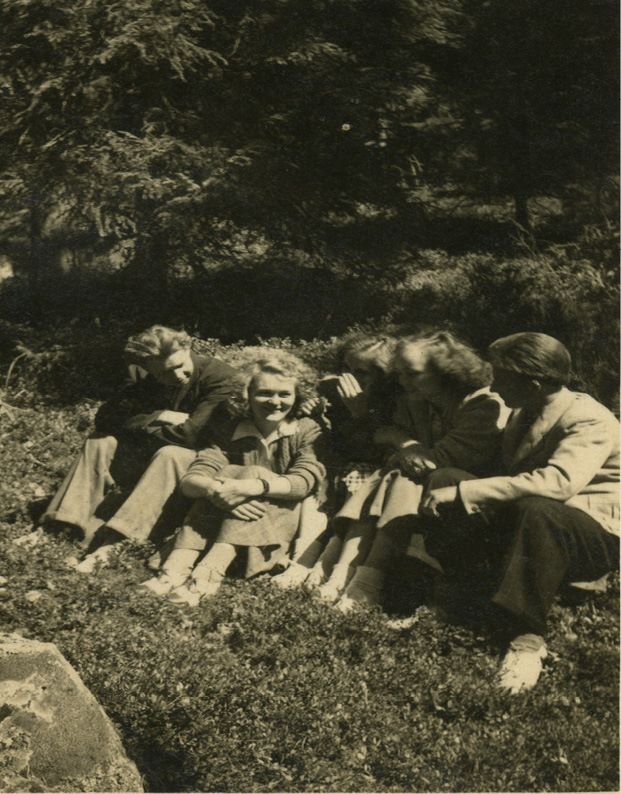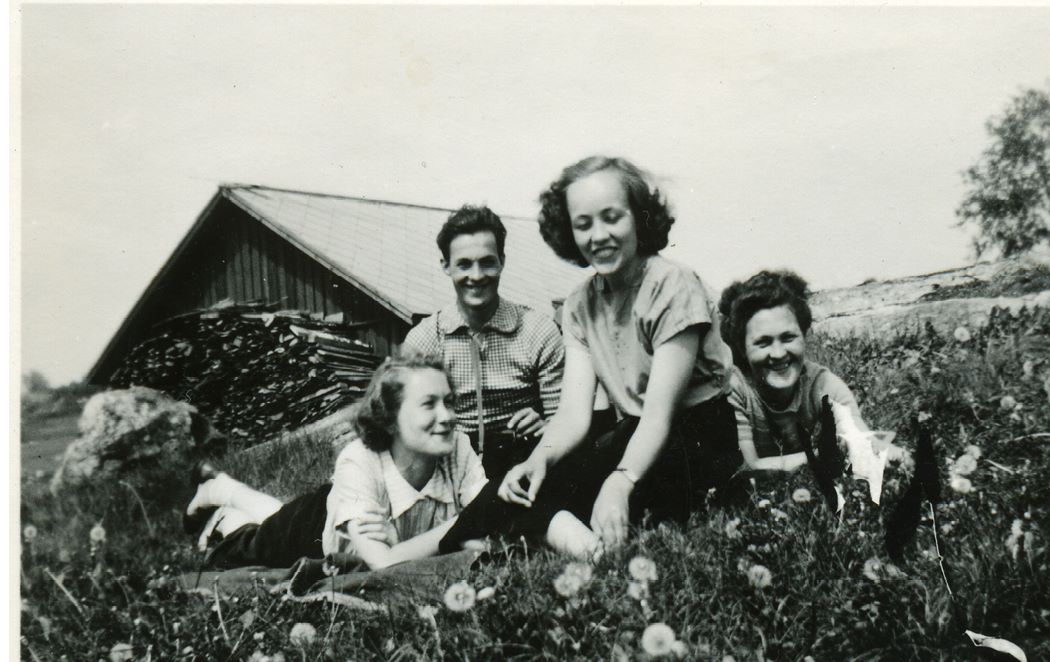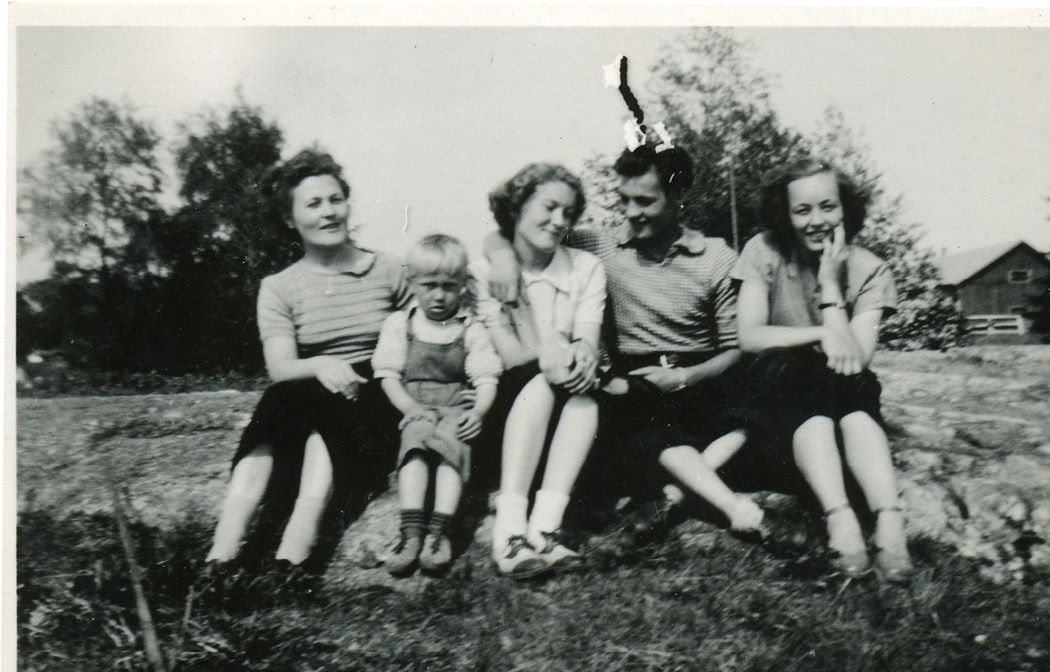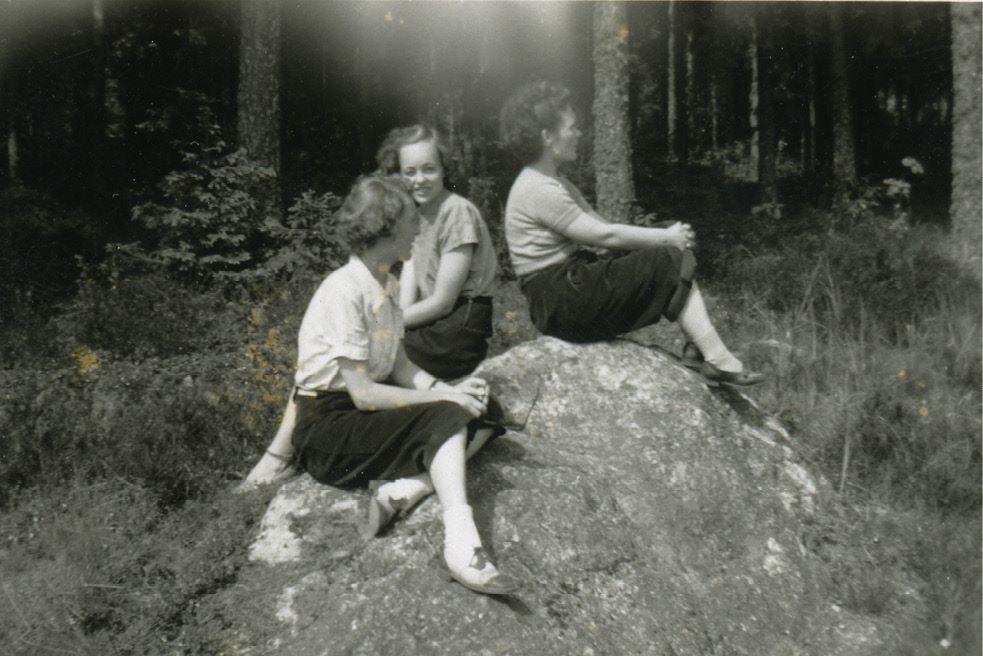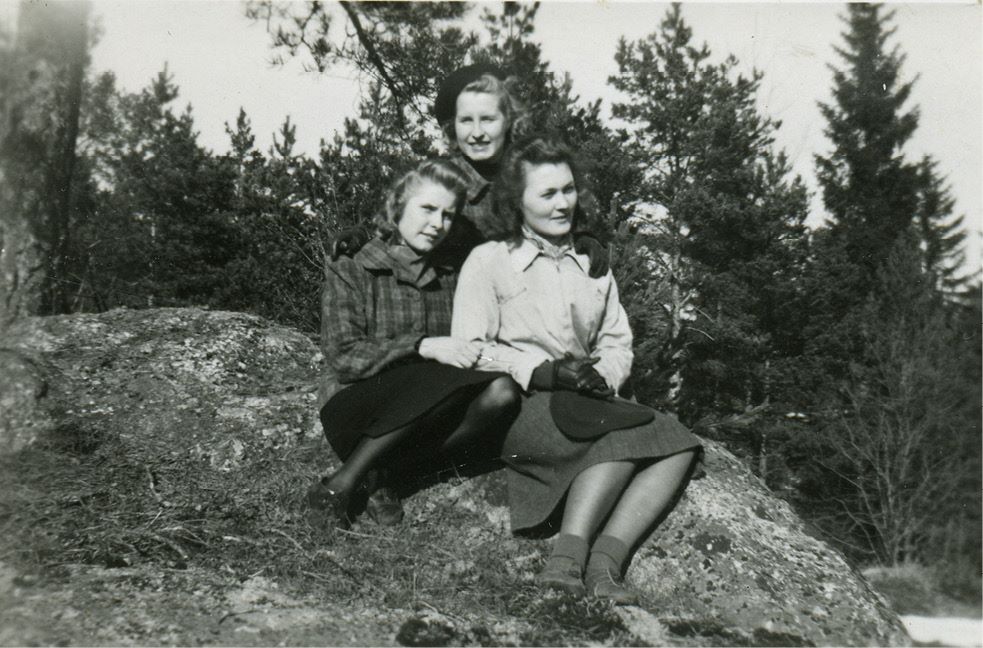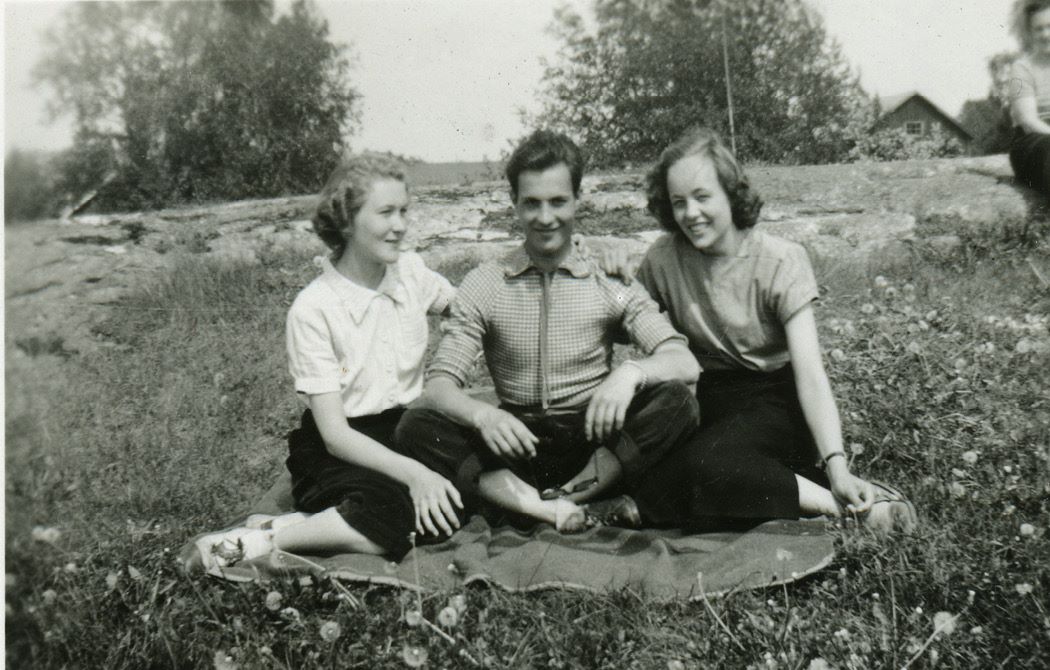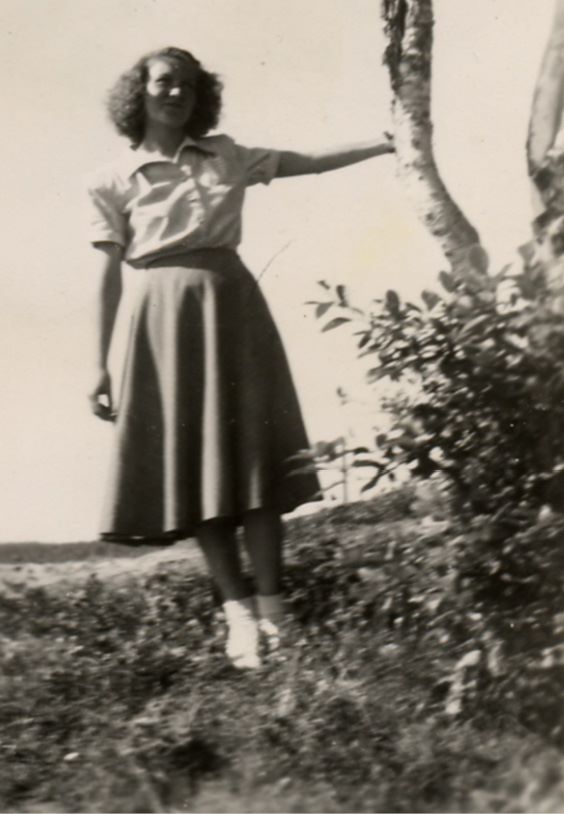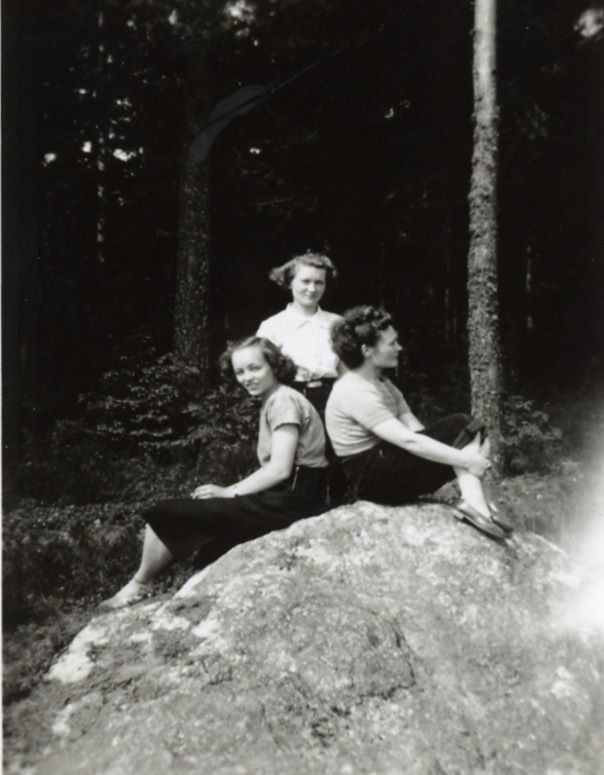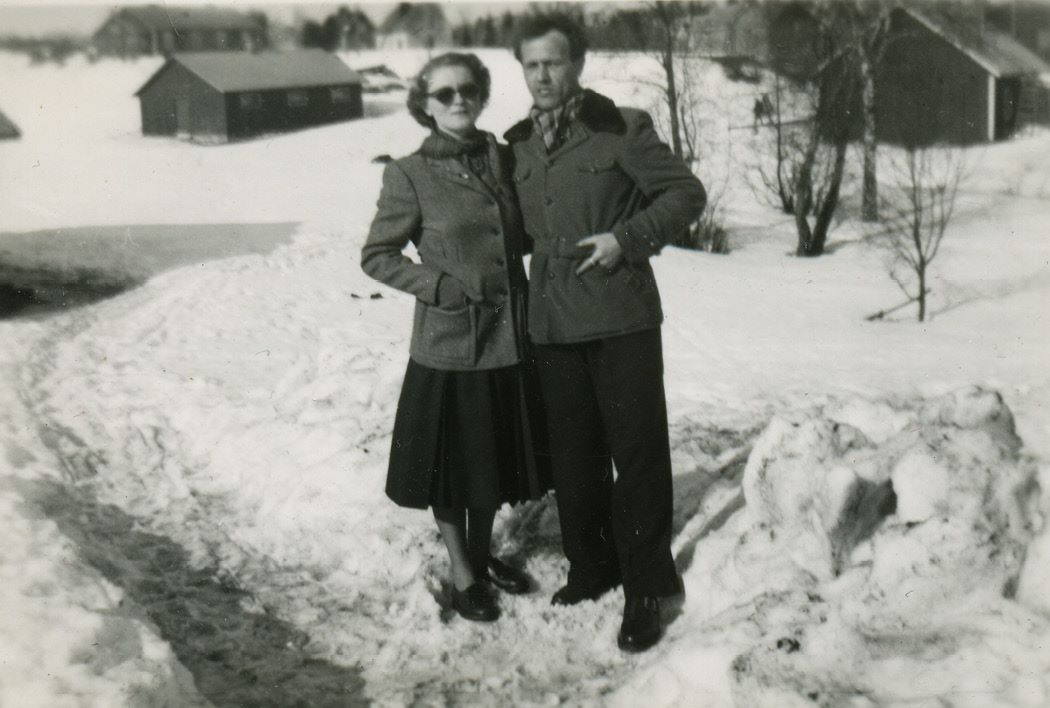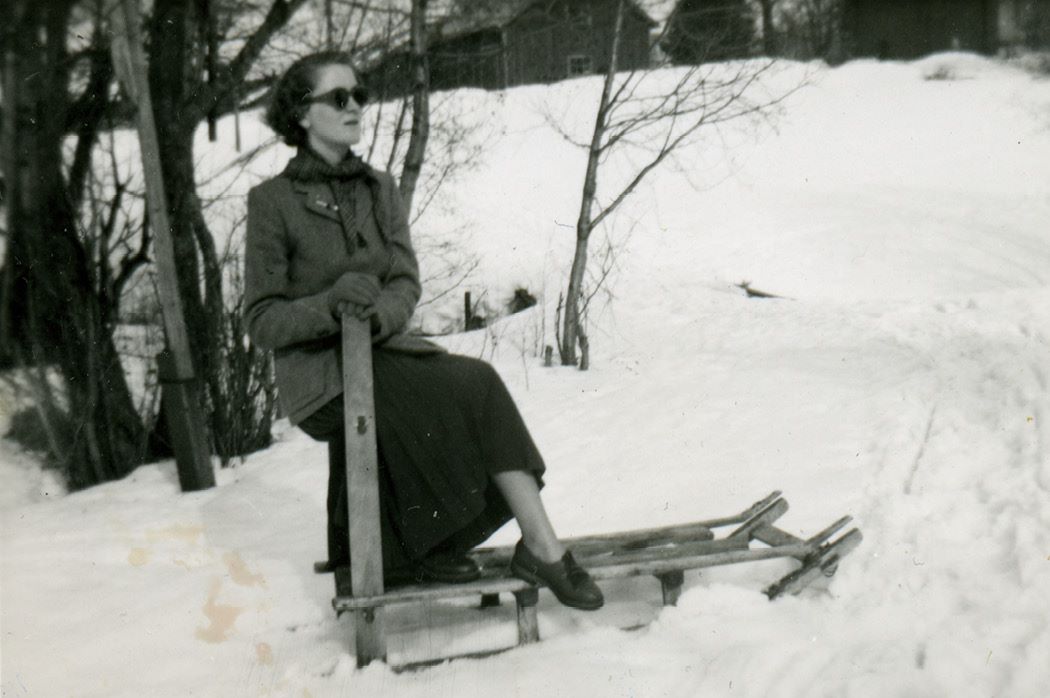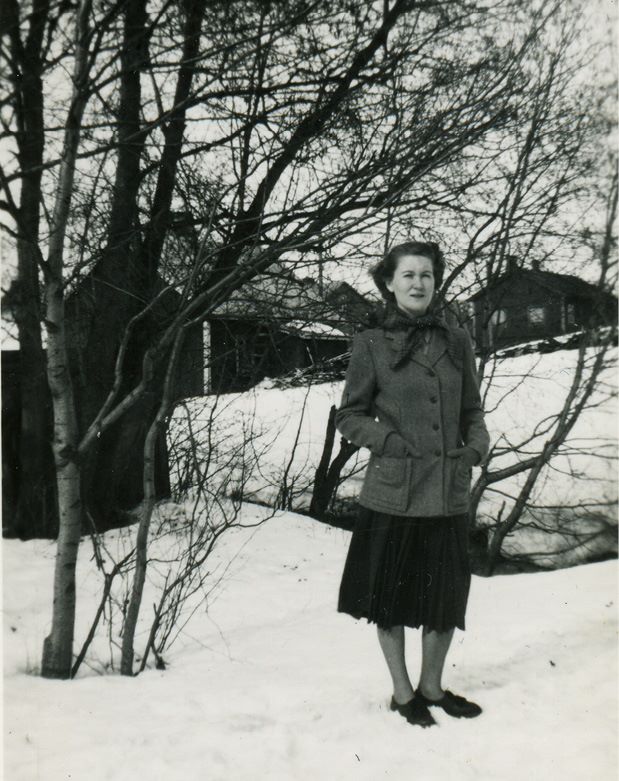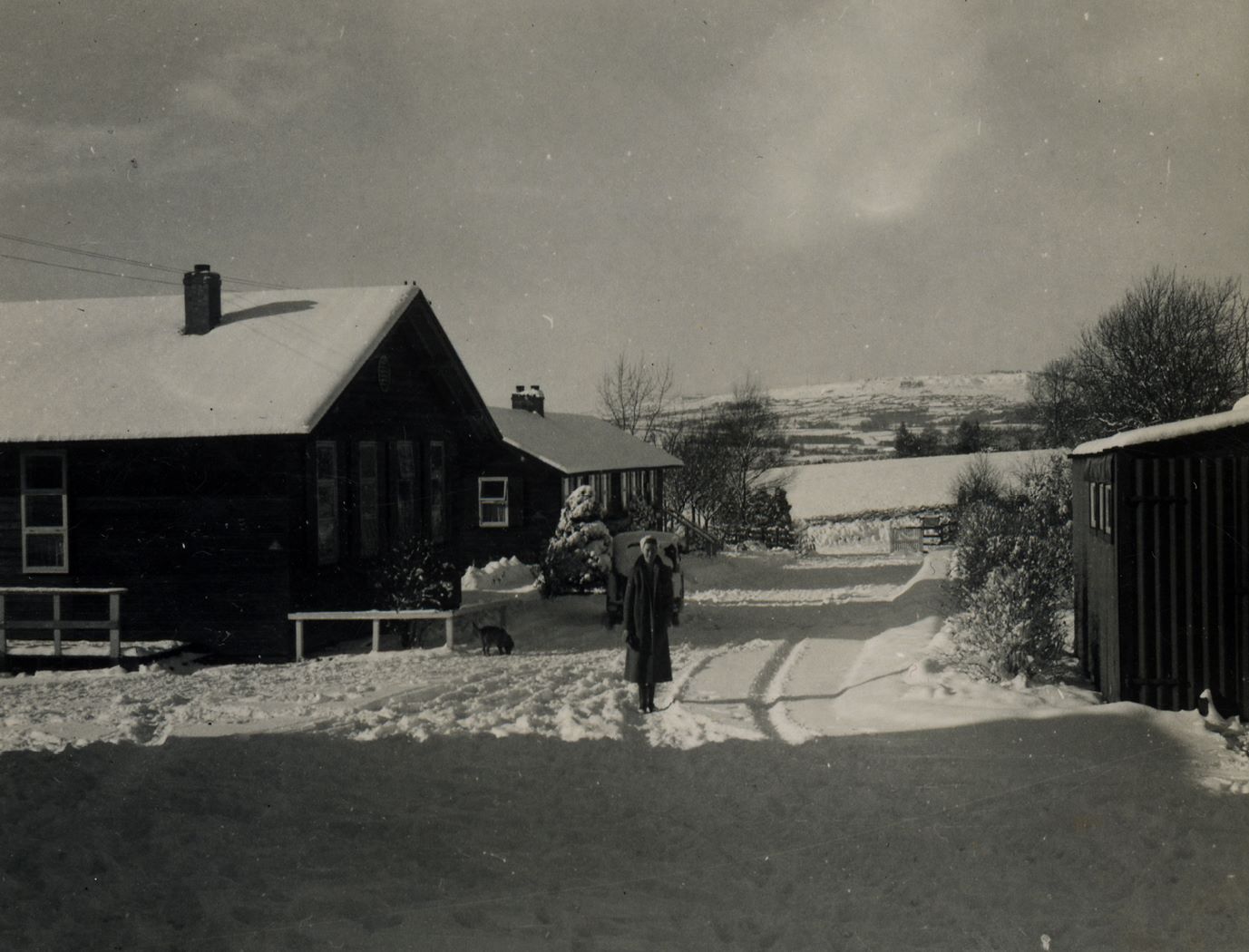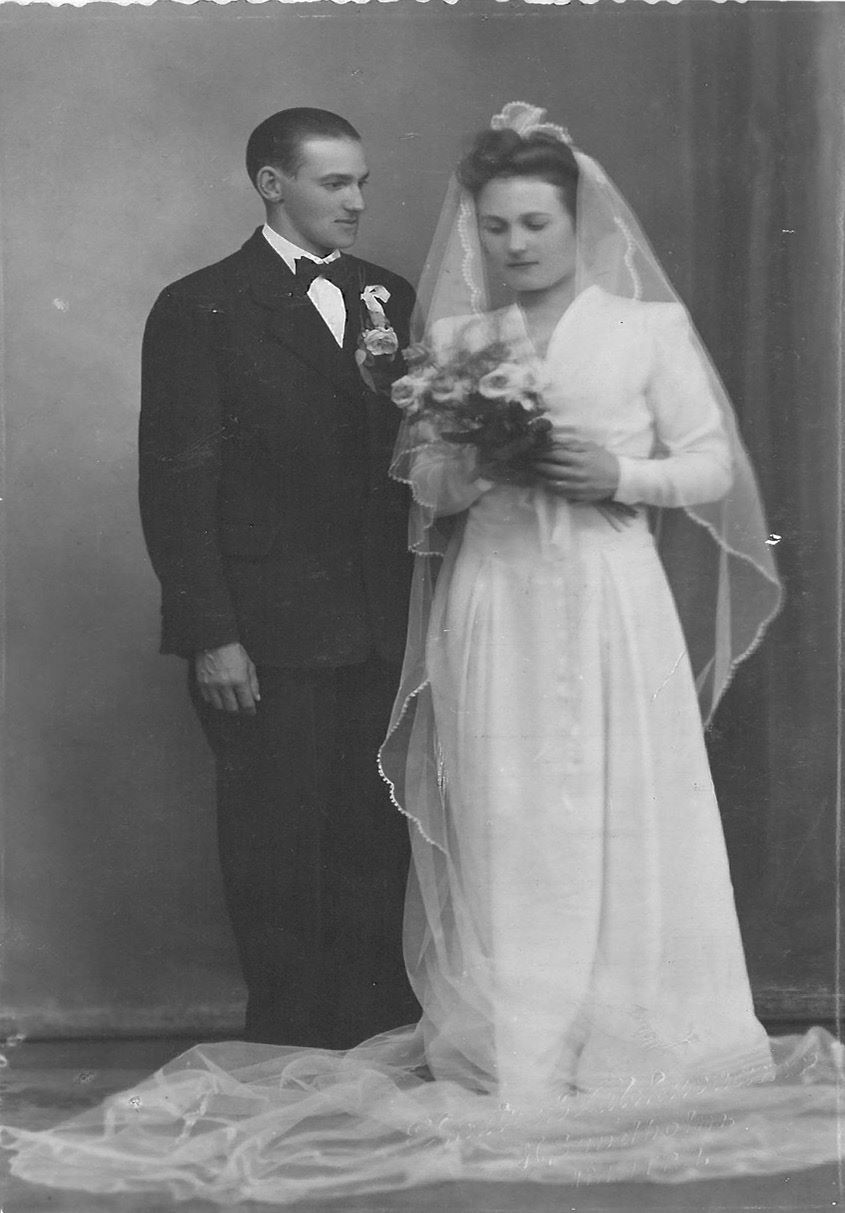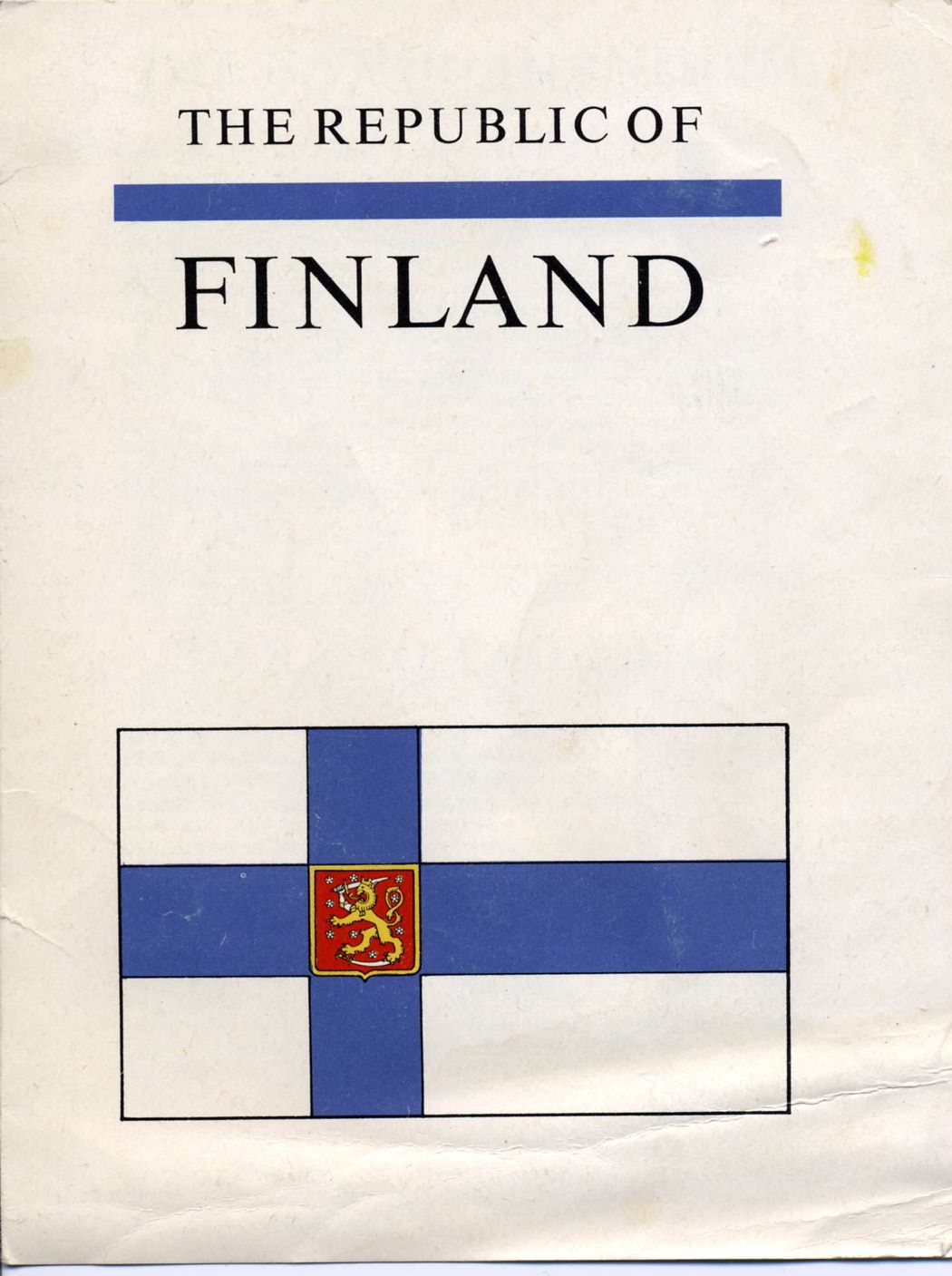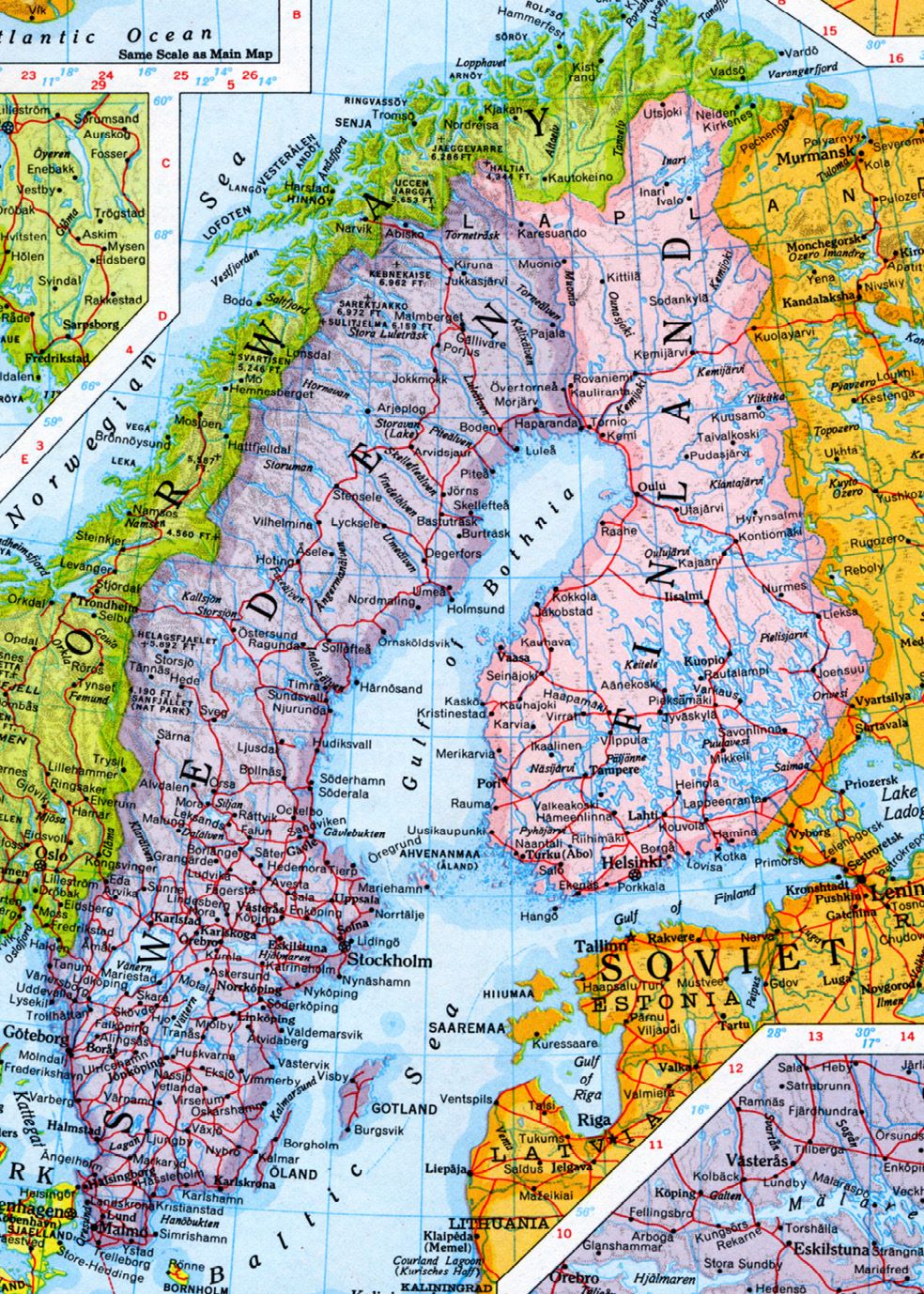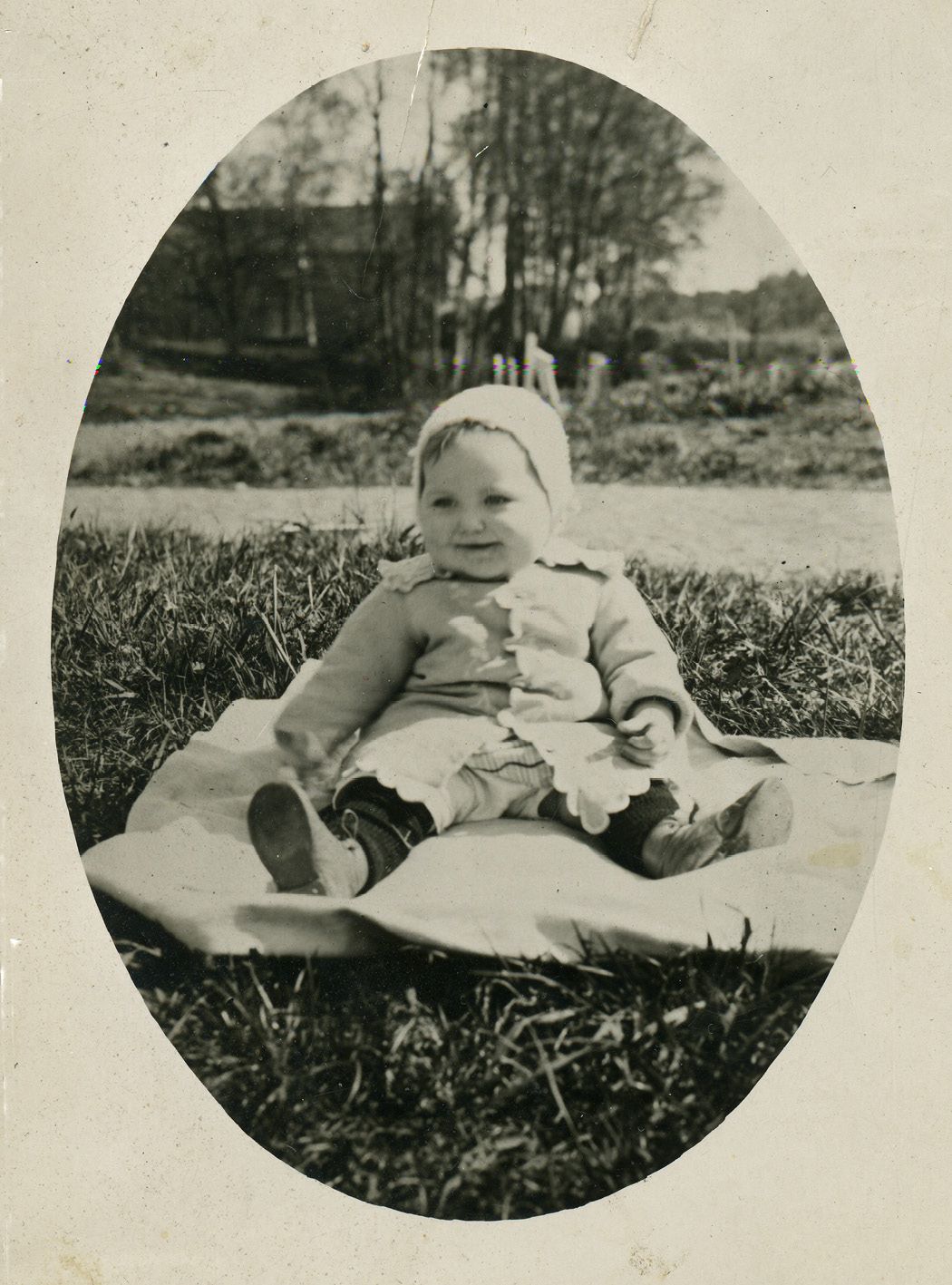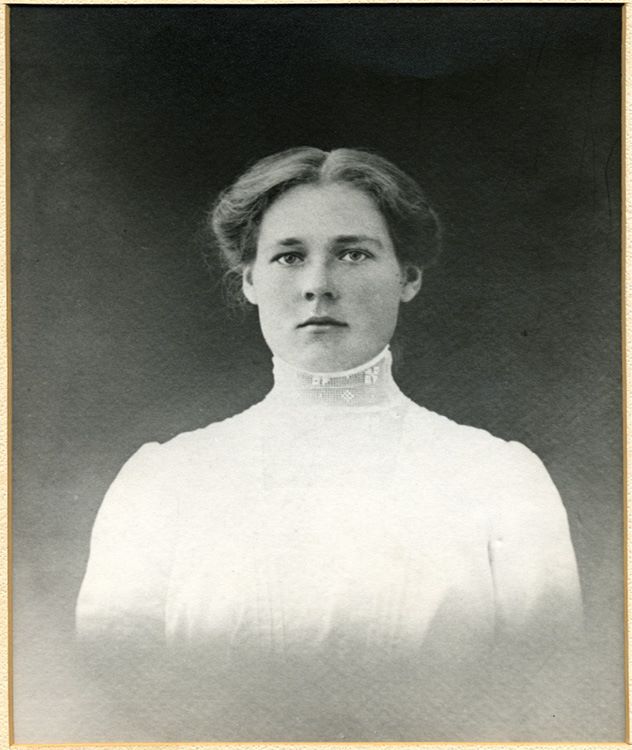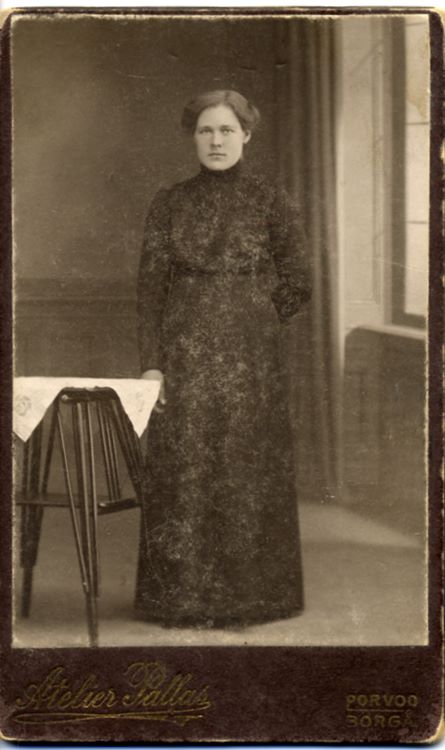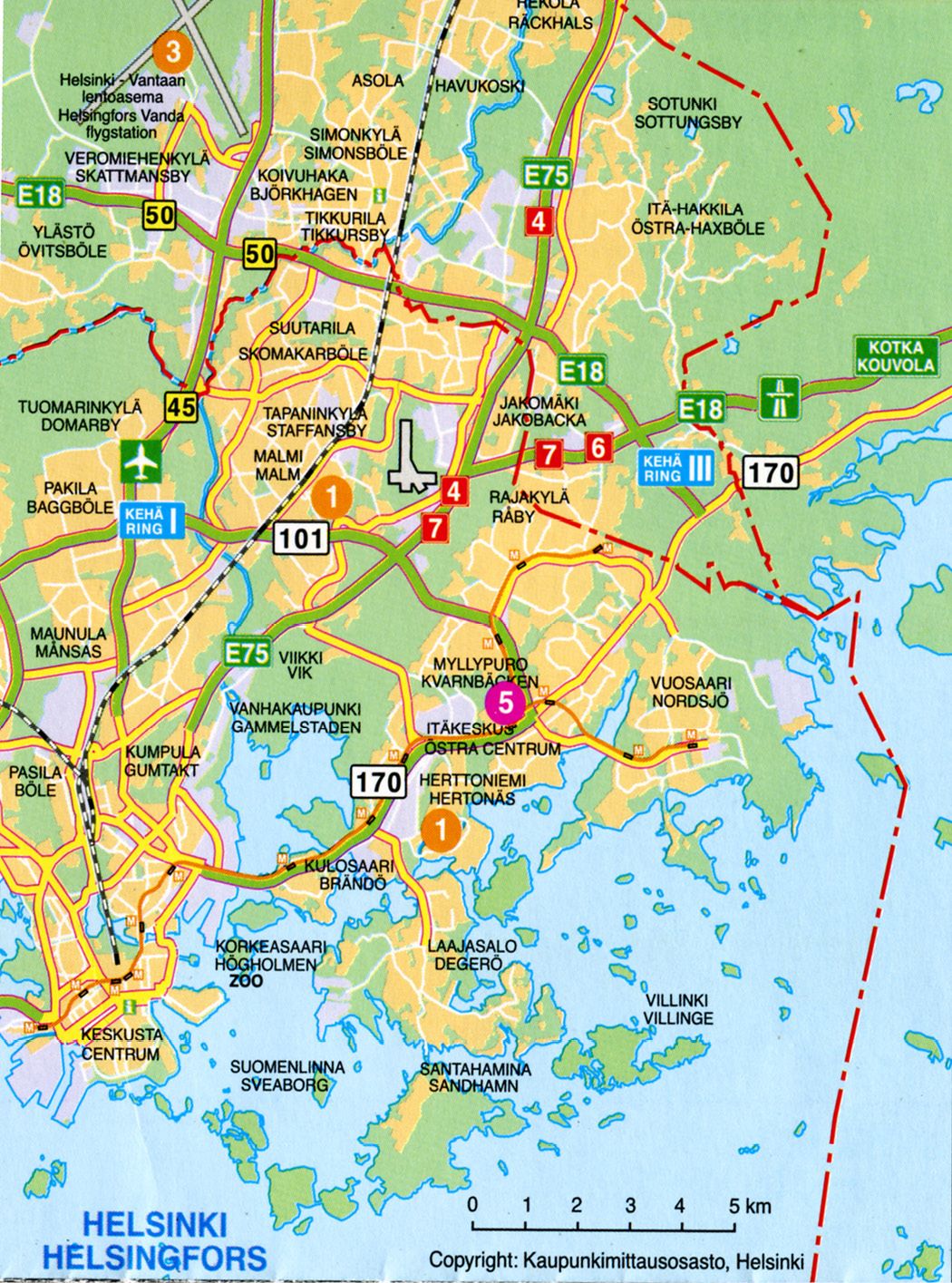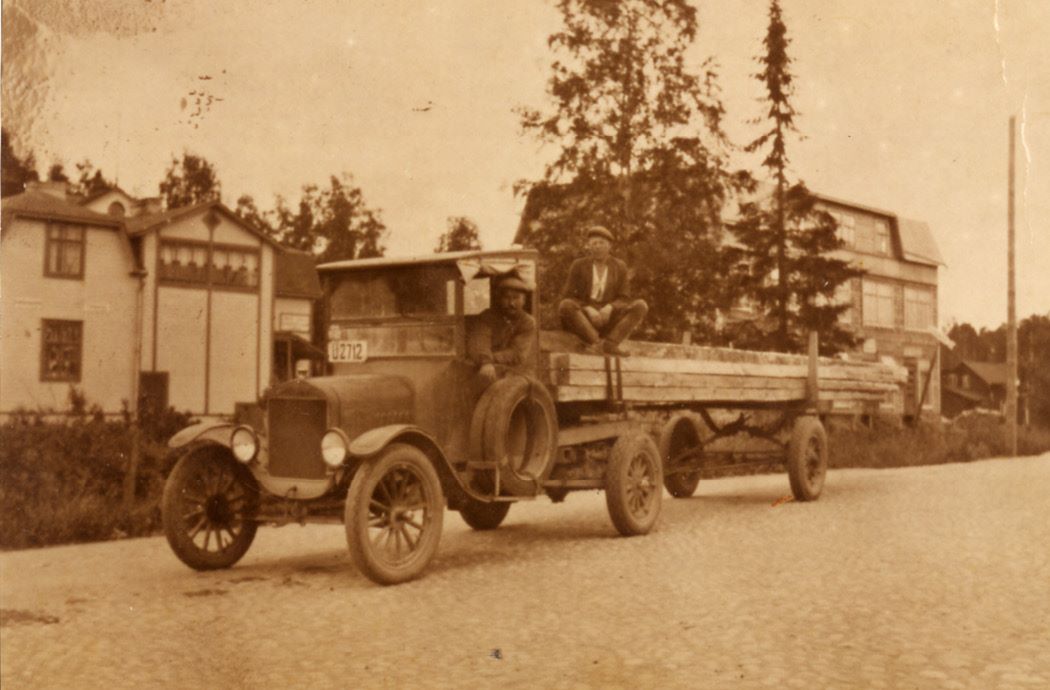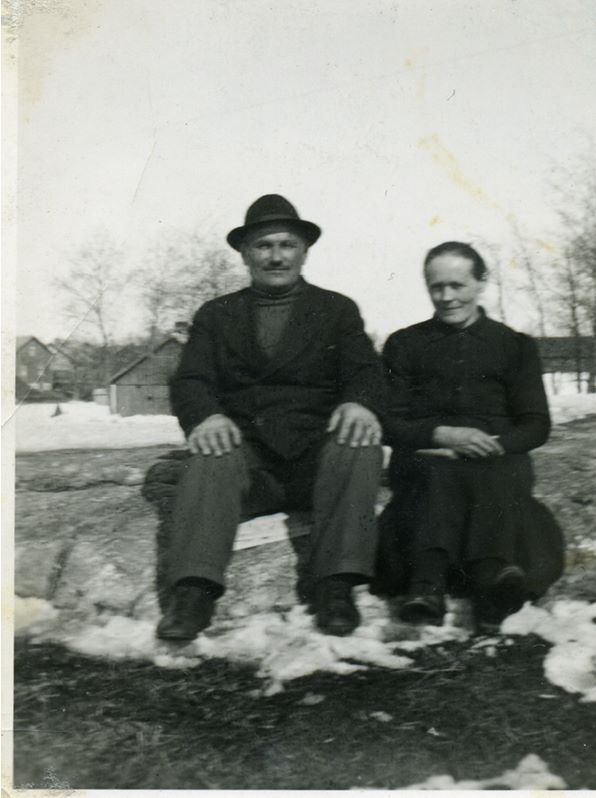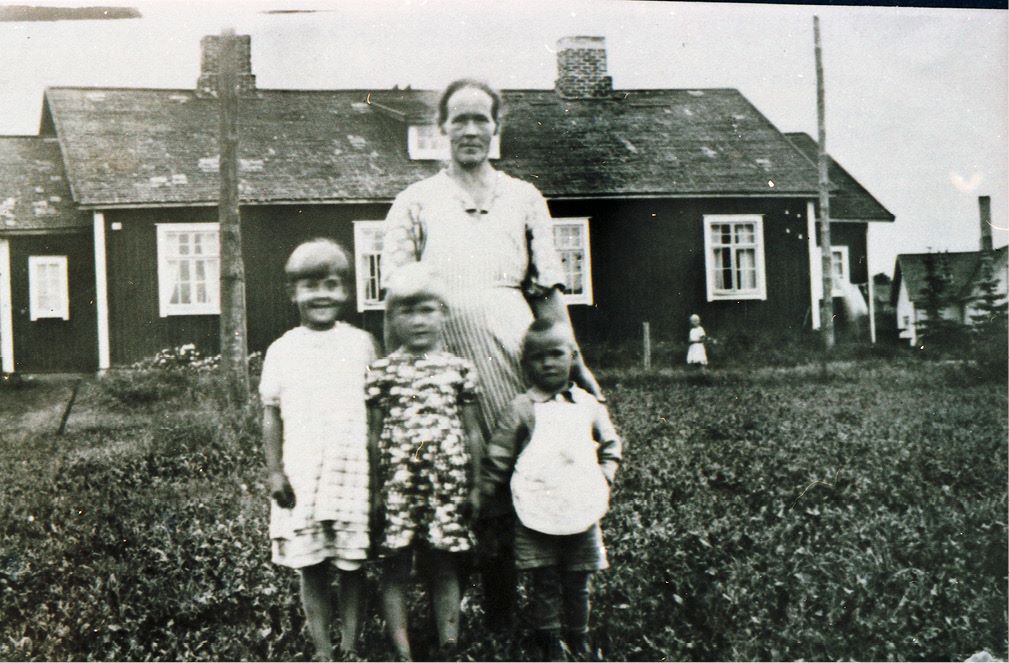The Soviet Government had seriously underestimated
the Finnish "SISU" (which translates,
in my experience, as "The heart and will to confront seemingly insurmountable
odds") of the Finns and by the end of 1939, the Red Army had suffered a series
of resounding and humiliating defeats. Though accurate Russian casualties
numbers are not known, the best information available at the time yield figures
of about 27,500 Red Army dead against a count of 2,700 Finnish dead and
wounded.
Finland, however was in a fight she could not win,
not without outside help and assistance. Although many nations were sympathetic
to Finland’s position to defend herself, they did not provide the support she
desperately needed in time. Had Norway and Sweden both joined Finland, the
Soviet Union was not in a position to take on all three, but both Norway and
Sweden felt that if they declared themselves as Neutral Countries, they would
stay out of the war. That kind of thinking proved to be a fatal mistake that
only prolonged their involvement in WW II. Finland’s gallant fight against
overwhelming odds came to an end, when it finally surrendered to the Soviet
Union and signed the Moscow Peace Treaty on March 12, 1940.
Adolf Hitler, never trusted Germany’s alliance with
the Soviet Union, and on 22 June 1941, at dawn 3,400,000 Armed forces of
Hitler’s Third Reich launched a surprise attack on the U.S.S.R., opposed by
4,700 defenders of the Red Army.
Once again, Finland would know the bitter taste of
battle. But this time, she was not alone, she was backed up by five German
Divisions on Finnish soil. Adolf Hitler, first allowed and in fact helped the
Soviet Union to invade little Finland. This came about, with the signing of the
Non-Aggression Treaty with the Soviet Union. Hitler, was well aware of what
RUSSIA was doing to Finland and
turned his back on the Finns and their struggle against the U.S.S.R., now he
looked to Finland for assistance.
Even though Finland never signed a formal agreement
with the Third Reich. Finland’s Marshal Mannerheim once again took to the
battle field against Finland’s oppressive neighbor ( RUSSIA ), in the land mass
between the Arctic Circle and the Gulf of Finland. This time, with 18 Divisions
under his command, all determined and eager for revenge, after the defeat the
Finns suffered in the bitter cold Winter of 1939-1940.
The Finns had not forgotten how Germany had looked
the other way when Russia’s Red Army invaded their small country. Although
Finland did not agree with or condone what Hitler was doing in Europe, she
embraced the alliance with Germany, because it provided Finland with the
opportunity to try and regain some of the territory lost to the Soviet Union by
the imposed terms of the Moscow Peace Treaty in 1940.
Finland was forced to cede nearly all of Finnish
Karelia (Finland’s industrial center, including Viipuri, Finland’s second
largest city), even though large parts were still held by Finland’s army.
Military troops and remaining civilians were hastily evacuated to inside the new
border. 422,000 Karelians, 12% of Finland’s population, lost their homes.
Finland also had to cede a part of the Salla area,
the Finnish part of the Kalastajansaarento Peninsula in the Barents Sea, and in
the Gulf of Finland the Islands of Suursaari, Tytärsaari, Lavansaari (now
Moshchny Island), Peninsaari (now Malyi Island) and Seiskari. Finally, the
Hanko Peninsula was leased to the Soviet Union as a naval base for 30
years.
Additional demands were that any equipment and
installation on the ceded territories were to be handed over. Thus Finland had
to hand over 75 locomotives, 2,000 railroad cars, a number of cars, trucks and
ships. The Enso industrial area, which was clearly on the Finnish side of the
border, as it was drawn in the peace treaty, was also soon added to the Finnish
losses of territory and equipment.
The Finns were shocked by the harsh peace terms. It
seemed as if more territory was lost in the peace than in the war, and the loss
was in many ways some of the highest valued parts of Finland.
Sympathy from the world opinion seemed to have been
of little worth. A certain bitter disappointment became a common feature of the
Finns’ view of other nations, not the least of Swedes, who had offered plenty of
sympathy but did not fulfill their obligations of military support for
Finland.
For better or for worse, the harsh terms made the
Finns inclined to seek support from Nazis Germany and made many Finns regard
revenge as justified. In the end, this might have been a necessary condition
for Finland’s survival in the World War.
Tyyne’s three older brothers (Edvin, Veikko and
Olavi) answered the call to arms and went into the Army, they were assigned to a
Finnish, German SS Unit on the Russian front. They all managed to survive the
many bitterly fought battles and engagements and returned home safely after the
war.
The war
years (1939-1945) brought new demands and hardship to millions of people like
Ida Maria and her family. Ida Maria, already a devoted, hard-working wife and
mother, became an even more creative homemaker. Like many women all over war
torn Europe, she had to make do with what limited resources were available to
her family. She was a living example of strength and courage for her
family.
All of Tyyne’s brothers and sisters learned to be
useful to the family by working in and around the farm. Tyyne was very strong
for girls her age. During the crop harvest season she would often help her
father. When other children her age would carry only one bucket full, Tyyne,
would grab a bucket in each hand, she was always a hard worker. Tiina’s given
name was Tyyne (In Finnish, it means peaceful or calm) a fitting name, because
Tyyne was a very good natured, considerate child and was always ready to help
any way she could. She was also a good student in school.
There was a time in the war when Tyyne and her
younger brother Pauli were sent to live with relatives in Central Finland, out
of Harm’s Way, because Helsinki and much of Southern Finland were under attack.
They would return home every few weeks. Tyyne told me, years later, how she and
her brother traveled in a crowded train full of soldiers and there was no place
to sit, so they had to stand.
They also carried butter and
cheese hidden under their coats, because food was in short supply in the
Helsinki area. She remembered how her mother learned how to make flour from
potatoes grown on the farm, because wheat flour was in short supply and very
expensive to buy. No one complained, because they were grateful for any food
they could get.
Tyyne had a lamb, Valle, that she had raised and
whenever it heard Tyyne’s voice or saw her, it would come running to her. One
day, the lamb was nowhere to be found. That evening, they had meat, a very
special treat, for supper. When Tyyne asked where the meat had come from, no
one would give her a straight answer. She then realized what had happened to
Valle, and became very upset and could not eat any part of her dinner, although
she was very hungry, just like the rest of her family.
One winter day
when she was home, she and a friend were walking across an open field on
their way home from a friend’s house,
when airplanes appeared overhead. As the two small girls looked up at the sound
of the engines, they were terrified to see the fighter planes bank into a dive
and began making strafing passes. Tyyne was certain she was going to get shot,
because she was wearing a bright red coat and she felt the pilots could easily
spot her against the white background of the snow covered field. She scurried
under the closest cover she could find, and fortunately the airplanes flew
away.
There were many nights at
home spent in the dark, because of an air raid in progress. The darkness was
broken now and then by the bright flashes of bombs bursting in nearby Malmi and
also from the Anti-Aircraft Guns and Search Lights. Even during the day, she
could see the bombs dropping from the bombers
flying over Malmi.
All the hardships she had
endured as a child growing up in the midst of WW II, gave her a sense of
compassion and caring. Her childhood experiences made her appreciate everything
and she did not take anything for granted.
She was grateful for what she had and very considerate of other people.
Tyyne’s parents, Juho Jalmari
& Ida Maria Kasslin, c. 1936-1938
Tyyne (on the right) and friend at Tyyne’s home in Malmi, about 1935.
(from left to right) Tyyne, brother Pauli(who moved as the picture was taken) and Vieno, c. 1935 - 36.
Tyyne (left) and two
friends, c. 1935 - 36.
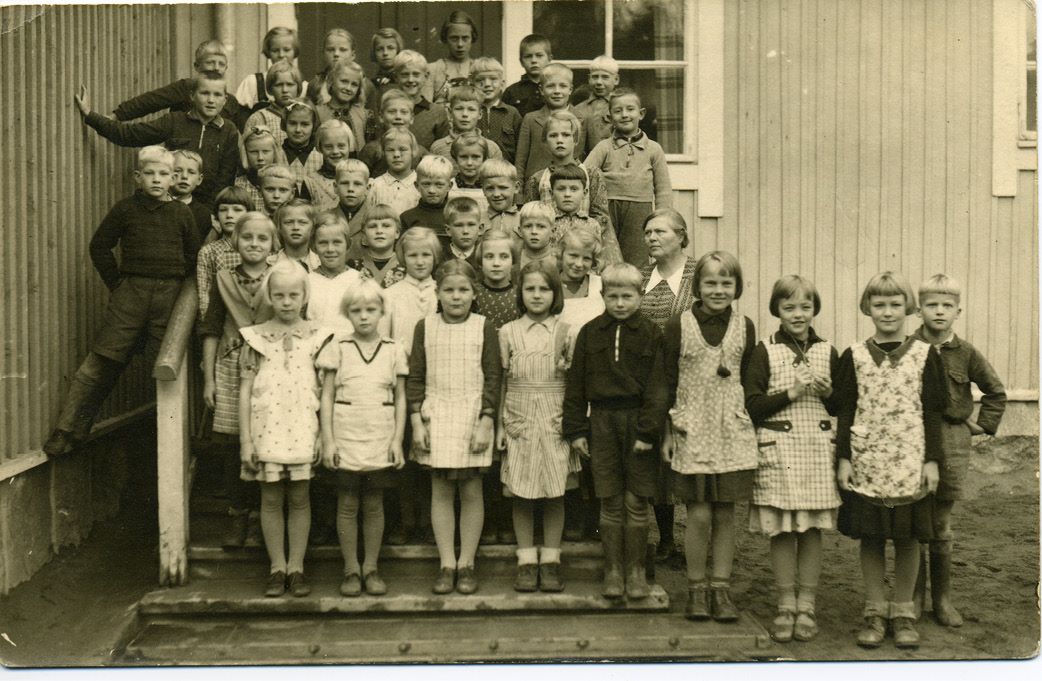
Tyyne’s school class; Tyyne is
in the front row, 2nd from right c. 1936 - 37.
School class picture. Tyyne is
in the top row, wearing a black hat, fourth from right, c. 1937 - 38.
Three vintage Finnish sisters in Sinisalo, Central
Finland, c. 1940
(left to right) Hilda, Erika, Ida Maria
Elementary school Physical Education Class. Tyyne,
top Row 8th from the right. About 1940.
Veikko, Tyyne’s second-eldest brother, home on a
short leave from the Finnish cavalry, c. Summer 1940
Olavi, Tyyne’s brother, home on a short leave at
their home in Malmi, Summer 1941. Their mother looks from behind the door, sister Hilja
(left) and friend Aili (right).
Finnish Bicycle Patrol on the Russian front, Fall
1941. Veikko, Tyyne’s brother, is at the front, with his bicycle far right.
Edvin, Tyyne’s eldest brother, at their home in
Malmi, Finland, c. summer 1941
Tyyne on a cycling outing, pumping up her tire, c. Summer 1943
Edvin and his sweetheart, Aili, in Malmi, c. Summer 1941. They had just become engaged to be married
Tyyne’s eldest brother Edvin
and his lovely bride Aili
Playing in the snow, c. early Spring 1943
(L-R) Vieno, Tyyne and friend.
Three sisters, out on a
sunny day early spring, c.
1943.
(L-R) Vieno, Hilja and
Tyyne.
Tyyne, with her pet lamb Valle, near her home in Malmi, age 12,
1943.
Olavi, Finnish army (Communications Unit) and Veikko, (R) German SS, home
on short leave from the Russian front, 1943.
Veikko, age 23, in his German SS uniform 1943. [The Finns were "allied" with Germany in WWII only in that the Germans were fighting the Russians, the Finns were fighting the Russians, and long story short, being geographically located between the Wehrmacht and the Red Army was bad news for everyone involved during the years in question].
Young Finnish beauties, c. 1943. Tyyne (first row center), Vieno (standing behind Tyyne and friends, near their home in Malmi.
Tyyne, c. 1943
Tyyne’s
second eldest brother Veikko and his lovely bride Marjatta
Tyyne’s
third eldest brother Olavi and his lovely bride Taimi
Tyyne’s
fourth eldest brother Onni and his lovely bride Kyllikki
Tyyne’s fifth
brother (the youngest of the Kasslin younger children) Pauli and his lovely
bride Aira.
School class, about 1946.
Tyyne, top row 3rd from right.
School class, about 1947.
Tyyne. top row 5th from right.
Tyyne enjoying a beautiful winter day, near her home
in Malmi, c. 1946 - 47
L to R, Tyyne, younger brother Pauli and older sister Vieno, c. 1945- 46
Tyyne, Confirmation Day, c. Fall 1946
Tyyne’s Confirmation class, Fall, Malmi, 1946. Tiina is in the top row of girls, sixth from the right.
Tyyne, portrait photograph of
her confirmation, age 15, Fall 1946
Ida Maria, hard at work, washing the family’s handmade throw rugs
Ida Maria, taking a well-deserved rest from her
family chores, at her home in Malmi
Ida Maria and brother Vikko at their home in Malmi,
c. 1948
Tyyne, 2nd from left and four of her good friends, enjoying a beautiful sunny spring day near her home in Malmi. about 1948.
(L– R) Tyyne, brother Pauli, family friend Ulla
Viitamala, and sister Hilja, enjoying a beautiful summer day, c. 1948
(L-R) Hilja, piku
("little)" Olavi (Tyyne’s nephew), Tyyne, Pauli, and Ulla, Summer 1948
(L-R) Tyyne, her best friend
Ulla, and sister Hilja, in their front yard, Malmi, c. 1948
Hilja (R), with two friends,
Eva (L) and Eila (C) on a beautiful spring day, near the Kasslin home, Malmi, c.
1949
(L-R) Tyyne, brother Pauli, and best friend Ulla,
Malmi, c. 1949.
Tyyne, enjoying a beautiful Summer day, Malmi, c. 1949
(L-R) Ulla, Tyyne, and Hilja, near Malmi, c.
1948-49
Tyyne and brother, Olavi, on a sunny winter day,
Malmi, c. 1949
Tyyne, on a home made sled, near her home in Malmi,
winter 1949.
Tyyne, near her home in Malmi, winter 1949.
Tyyne, at her home in Malmi, winter 1949.
Tyyne’s eldest sister Hilja, on her Wedding Day.
After
completing school, Tyyne’s first real paying job was as a Bank Teller, because
she had a good head for math and figures. She had learned some English in school
and had practical experience speaking English while working at the bank.
After completing school, Tyyne’s first real paying
job was as a Bank Teller, because she had a good head for math and figures. She
had learned some English in school and had practical experience speaking English
while working at the bank. She loved to travel, although she had not done much.
She became aware that there was a real demand for Finnish girls to work in
London, England. She learned that previous Finnish girls had help established a
reputation of being good workers, and the Brits were eager to hire them. She
thought it would be an excellent opportunity to travel and see London, work
there and also learn how to improve on her English speaking ability. She
traveled to London in the Spring of 1951. She found employment as a Nurses’
Aid at Colindale Hospital in London.
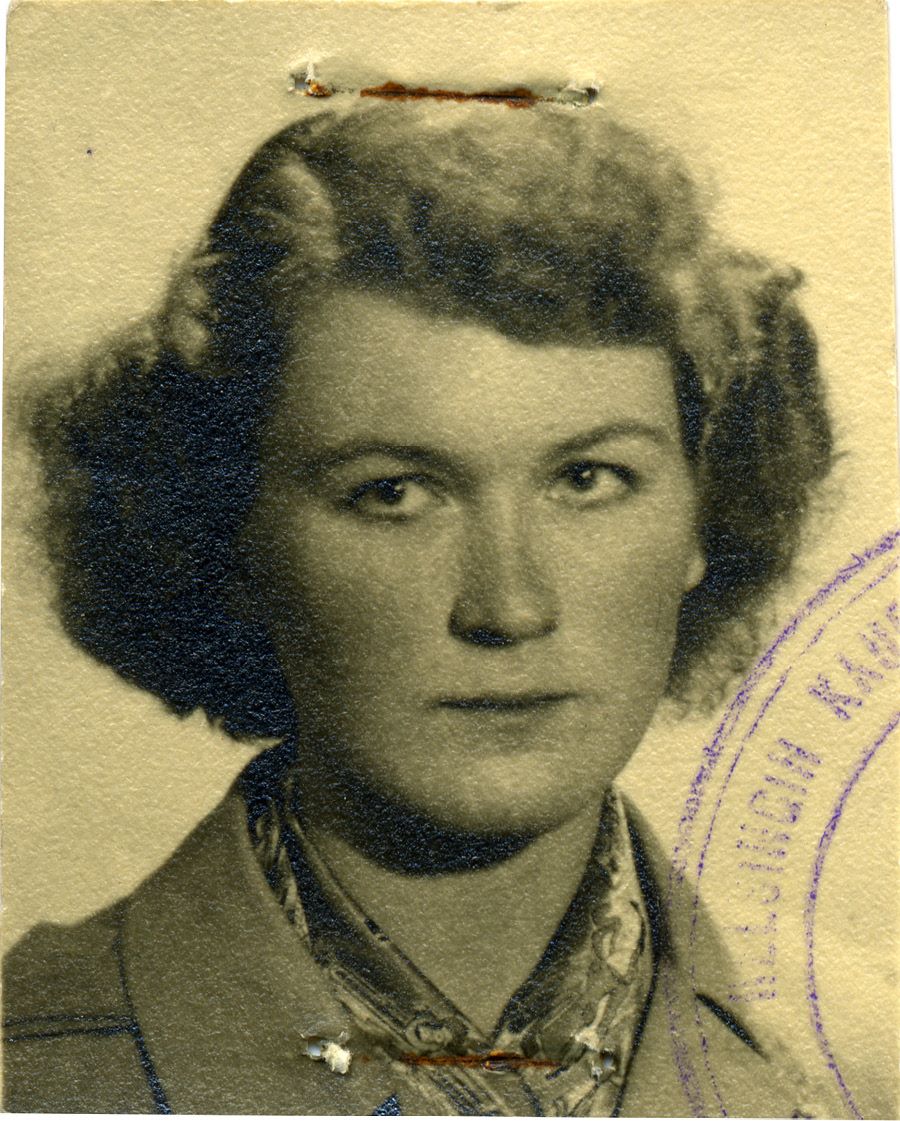
Tiina’s first passport photo, taken 31 July
1951.
Go back to to Introduction and Dedication, A True Love Story
Continue to Chapter 2: TIINA’S LONDON EXPERIENCE, 15 AUGUST 1951 – 15 AUGUST 1953
